
Members’ Magazine of Jefferson Public Radio March/April 2024
Pharmacist Prepares Documentary To Spotlight Industry Changes
The
Oregon
“We give to help kids experience the outdoors, music and art they would otherwise miss in rural communities.”
— RUBY & CECIL OCF DONORS SINCE 2016
OREGONIANS HELPING OREGONIANS ]



There are countless reasons to give, and endless causes to support, but what made Ruby and Cecil decide it was time to start a fund? “We have everything we need and a bit to share — and we saw a great gap in opportunities offered to kids in our area. So we decided to help fill it.” Says Ruby. Through OCF they started a fund, and now hundreds of kids are benefiting yearly from their sharing. We help people like Ruby and Cecil, and you, improve the lives of fellow Oregonians. Let’s get started.
[
LET’S GET STARTED | OREGONCF.ORG/GETSTARTED



JPR Foundation
Officers
Ken Silverman – Ashland
President
Liz Shelby – Vice President
Cynthia Harelson –Medford/Grants Pass
Treasurer
Andrea Pedley – Eureka
Secretary
Ex-Officio
Rick Bailey
President, SOU
Paul Westhelle
Executive Director, JPR
Shelley Austin Jefferson Live Executive Director, Ex-officio
Directors
Eric Monroe – Medford
Ron Meztger – North Bend
Rosalind Sumner – Montague
Dan Mullin – Eugene
Margaret Redmon – Redding
Karen Doolen – Medford
JPR Staff
Paul Westhelle
Executive Director
Darin Ransom Director of Engineering
Sue Jaffe
Membership Coordinator
Valerie Ing
Northern California Program
Coordinator/Announcer
Abigail Kraft
Business Support Manager/ Jefferson Journal Editor
Don Matthews
Classical Music Director/ Announcer
Geoffrey Riley
Assistant Producer/ Jefferson Exchange Host
Erik Neumann News Director/Regional Reporter
Dave Jackson
Music Director/Open Air Host
Danielle Kelly
Open Air Host
Soleil Mycko
Business Manager
Angela Decker
All Things Considered Host
Jefferson Exchange Senior Producer
Charlie Zimmerman
JPR News Production Assistant
Zack Biegel
JPR News Production Assistant
Calena Reeves
Audience & Business Services Coordinator
Liam Bull Audience Services Assistant
Vanessa Finney
All Things Considered Host
Roman Battaglia
Regional Reporter
Justin Higginbottom
Regional Reporter
Jane Vaughan
Regional Reporter
Milt Radford
Morning Edition Host
Dave Young
Operations Manager
Josh Raines
Network Engineer
JPR News Contributors
Juliet Grable
Kelby McIntosh
JEFFERSON JOURNAL (ISSN 1079-2015), March/April
2024, volume 48 number 2. Published bi-monthly (six times a year) by JPR Foundation, Inc., 1250 Siskiyou Blvd., Ashland, OR 97520. Periodical postage paid at Ashland, OR and additional mailing offices.
POSTMASTER: Please send address changes to The Jefferson Journal, 1250 Siskiyou Blvd. Ashland, OR. 97520
Jefferson Journal Credits:
Editor: Abigail Kraft
Managing Editor: Paul Westhelle
Poetry Editor: Amy Miller
Design/Production: Impact Publications
Printing: Oregon Web Press

FEATURED
6 Oregon Pharmacist Prepares Documentary To Spotlight Industry Changes
By Jake Thomas
A Eugene practitioner and her colleagues are delving into work conditions, safety and the public’s access to care. Anaïs Webster Mennuti was working as a pharmacist parttime at a retail pharmacy chain in Eugene when she said she realized just how broken her profession had become. She recruited a team, and together they have been raising money and traveling around the country to conduct interviews and gather material for a documentary called “Harmacy” — named for the harms felt by pharmacists, technicians and the public caused by what they see as troubling trends.
12 Local Political Organizing Increasing Despite National Dysfunction
By Jane Vaughan
In recent months, a variety of recall efforts and citizen’s petitions have sprung up across Southwestern Oregon and far Northern California, from Redding to Brookings. Jane Vaughan examines these grassroots efforts that have gained traction in the region.
Jefferson Public Radio is a community service of Southern Oregon University. The JPR Foundation is a non-profit organization that supports JPR’s public service mission. Jefferson Public Radio welcomes your comments: 1250 Siskiyou Blvd., Ashland, OR 97520-5025 | 541-552-6301 | 1-800-782-6191 530-243-8000 (Shasta County) | www.ijpr.org jprinfo@sou.edu Jack Barthell Noah Brann-Linsday Derral Campbell Cindy DeGroft Craig Faulkner Eric Houghton Ed Hyde Alan Journet Taurie Michelle Frances Oyung Raymond Scully Shanna Simmons Lars Svendsgaard Traci Svendsgaard Robin Terranova Programming Volunteers JEFFERSON JOURNAL March/April 2024 5 Tuned In | Paul Westhelle 15 JPR News Focus: Science & Environment | Lynne Terry 17 JPR Two-Way | Jane Vaughan 19 JPR News Focus: Environment | Alex Baumhardt 21 Inside The Box | Scott Dewing 23 JPR News Focus: Economy | Allison Frost 24 JPR Radio Stations & Programs 27 JPR News Briefs 31 JPR News Focus: Environment | Elizabeth Castillo 33 JPR News Focus: Energy | Monica Samayoa 35 JPR News Focus: Politics & Government | Dirk Vanderhart 37 JPR News Focus: Science & Environment | Courtney Flatt 39 Underground History | Chelsea Rose 41 Down To Earth | Juliet Grable 43 Recordings | Dave Jackson 45 Milk Street | Christopher Kimball 46 Poetry | Bryan Saint Germain communities.”

APPLEGATE VALLEY OREGON
“But Aside from the excellent Applegate wines I’ve had from Willamette producers, the wines of one producer, Troon Vineyard, made such an impression on me over the last few years that I drove seven hours from the Mendocino Coast in July to pay a visit to Applegate Valley, While I admire the way Troon farms and its empirical attitude, the proof is in the wines, which are invariably fresh, lively and expressive,”
—Eric Asimov The New York Times
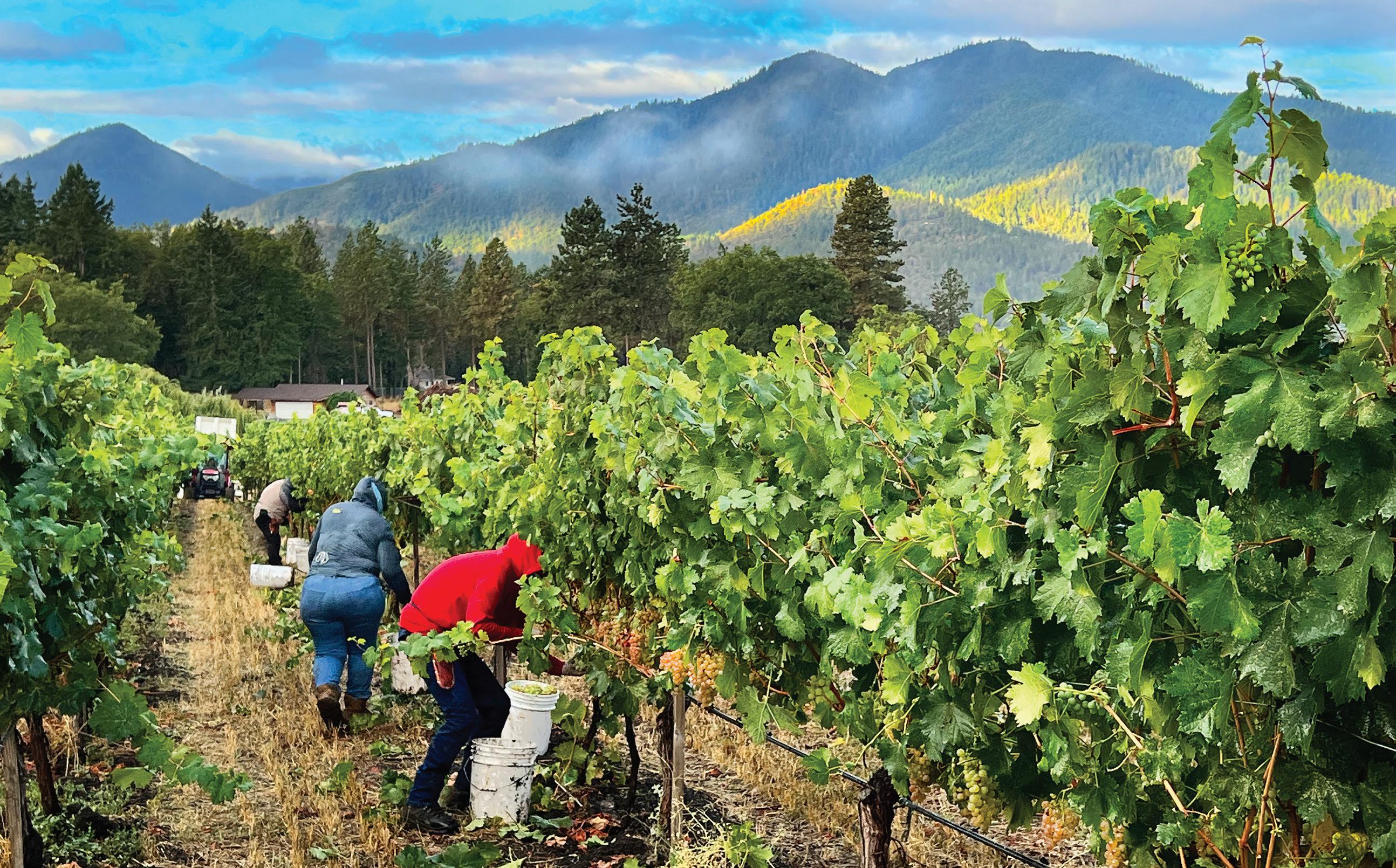
troonvineyard.com | Social: @TroonWines 541-846-9900 Winery: 1475 Kubli Rd., Grants Pass, OR | McMinnville: 620 NE Third St., McMinnville, OR
One of only four farms globally to be Regenerative Organic Gold Certified® Oregon’s only Demeter Biodynamic® and Regenerative Organic Certified™ Winery

In Praise Of The Fallopian Jungle
In early February an email arrived from NPR announcing Linda Wertheimer’s retirement. Wertheimer has been an NPR icon for over five decades and, along with Susan Stamberg, Nina Totenberg, and the late Cokie Roberts, was crowned one of NPR’s “founding mothers” in the 2021 bestseller Susan, Linda, Nina & Cokie: The Extraordinary Story of the Founding Mothers of NPR by Lisa Napoli.
When Wertheimer started at NPR, there were still few women journalists covering serious news. Most women journalists were shuffled to the “women’s pages” of newspapers where they wrote about food, fashion and society. But NPR gave Wertheimer a chance, and she never looked back.
In recognition of Women’s History Month, I thought I’d honor Linda Wertheimer’s trailblazing career by letting her speak for herself, sharing excerpts of her farewell message to NPR stations and listeners across the country.

“I was incredibly lucky to arrive at NPR when I did, which was at the very beginning … NPR was not yet on the air, All Things Considered was barely an idea and nowhere near a program …
I am proud to say I was one of the first hires on the news side. At our first staff meeting there were no chairs (or tables) but there were eager people with lots of plans sitting on the floor and I was one of them …
I started as a director for our first program, ATC, which was the only job I’ve had at NPR that I disliked. My colleagues somehow could not cram their news reporting into the number of minutes that were assigned and every day we had some kind of crisis as I ruthlessly chopped their wonderful pieces down to size. I moved, as quickly as I possibly could, to the reporting side and began the longest and most wonderful part of my long career as a Nipper. I was Congressional Correspondent, then Political Correspondent, covered four presidential campaigns and co-anchored NPR’s coverage of national presidential conventions and a dozen presidential election nights and in 1989 I became the co-host of All Things Considered. I served for 12 years with wonderful partners Robert Siegel and Noah Adams. Along the way I spent many years traveling and listening to voters. I can say without a trace of modesty that after all those conversations I always knew who was going to win the election. Also along the way I made lifelong friends, covering Congress and politics and campaigns with the late brilliant Cokie Roberts who was a great partner and Nina Totenberg, the best Supreme Court correspondent there is. For years, the three of us sat in the corner of the newsroom and presided over what some of our colleagues called the Fallopian Jungle. We thought it was a nice nod to the fact that NPR put so many women on the radio …
In the early days, NPR could not afford to pay very well and so depended upon younger people at all levels. I have always believed that also contributed to our sound and to the reporting and kind of stories we covered in addition to the regular news. The young people are still with us, younger every year I think … producers and production assistants, writers, reporters, folks who edit, people who direct the programs, interns. I believe it is one of the most remarkable things about the place, that so many of the original thoughts and ideas are still at work, made modern, of course, by all those “kids” …
I have had a great ride over more than fifty years — and now that ride is over.”
For nearly the entirety of JPR’s existence (JPR’s first station, KSOR, was founded in 1969 and Linda started at NPR in 1971) Linda Wertheimer has informed us all about important world events, told compelling stories that have kept us in our driveways way too long, and creatively influenced NPR’s unique voice. She’s also paved the way for so many talented journalists who do this work today, setting standards that propel NPR and its member stations into the future.
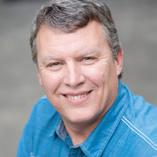
Paul Westhelle is JPR’s Executive Director.
MARCH/APRIL 2024 JEFFERSON JOURNAL | 5
TUNED IN
PAUL WESTHELLE
Linda Wertheimer
Oregon Pharmacist Prepares Documentary To Spotlight Industry Changes
By Jake Thomas

A Eugene practitioner and her colleagues are delving into work conditions, safety and the public’s access to care.
Anaïs Webster Mennuti was working as a pharmacist part time at a retail pharmacy chain in Eugene when she said she realized just how broken her profession had become.
By 2021, pharmacy workers all over already felt understaffed, overstressed and at risk in workplaces that were a prime destination for people sick with an infectious virus whose effects were often potent, even fatal. When pharmacies began administering the COVID-19 vaccine, it meant a stream of new appointments on top of the demands of checking prescriptions, billing insurance and answering constantly ringing phones — all while productivity trackers recorded each move.
Citing low pay and grinding workloads, pharmacists and technicians across the country took to social media, likening their jobs to those of fast food workers.
To Webster Mennuti, who is a writer outside of her pharmacy work, the situation called for more than social media. She sent a text to a friend that launched her on a mission to bring a documentary on the dire conditions of pharmacy to life.
She recruited a team, and together they have been raising money and traveling around the country to conduct interviews and gather material for a documentary called “Harmacy” — named for the harms felt by pharmacists, technicians and the public caused by what they see as troubling trends.
The documentary, which they plan to finish by the end of the year, is about more than the pandemic.
“The writing on the wall has been there for a long time with some of the issues and root cause of what’s going on in pharmacy,” Webster Mennuti told The Lund Report. “It’s come to the surface over time, and then COVID cracked it open to where the general public could see.”


Pharmacy changes accelerating
The documentary project comes at a time when long-simmering issues over low reimbursement rates to pharmacies and their struggles with staffing are drawing national attention.
Staff at drugstore chains Walgreens and CVS in October launched walkouts across the country to protest what they characterized as unreasonable workloads that were affecting patient care. Retail pharmacy closures that have caused rural residents to travel long distances or wait hours for their prescriptions have sparked scrutiny in Congress.
Adding to the issues has been rapid industry consolidation. Concerns over further loss of community pharmacy access are fueling opposition in Oregon to a proposed merger of supermarket chains Kroger and Albertsons, leading to the state’s decision to open up an application period ending Jan. 19 for a community review board to more closely study the transaction.
Overall, Oregon has seen its retail pharmacies dwindle significantly, triggering a partially successful legislative effort to regulate drug supply middlemen blamed for putting them out of business.
That’s why Webster Mennuti has been able to enlist support from the Oregon State Pharmacy Association, a pharmacists’ trade group.
Brian Mayo, executive director for the group, said it has contributed $3,000 to help fund the effort, which he described as a chance to highlight problems facing an overlooked area of patient care as well as positive trends in pharmacy.
“It’s a rare opportunity to have a documentary that focuses on the pharmacy industry,” he told The Lund Report. “And even more rare for it to be a local pharmacist from Eugene, who’s the director and producer.”
Patients’ ‘last line of defense’
While studying at the University of Wisconsin at Madison, Webster Mennuti worked as a pharmacy technician at a store that typically filled around 700 prescriptions daily. She recalled work days going by fast as the busy pharmacy worked like a “well-oiled machine.”
Beginning in 2014, she noticed a shift as the store began cutting staff hours and pharmacist positions. All the senior technicians, one who had worked there 15 years, quit for better jobs, she said.
After getting her doctor of pharmacy in 2016, Webster Mennuti took various positions before landing in Eugene where she took a job working in a hospital while moonlighting at a retail pharmacy chain (she declined to name her employers). She described her work as a retail pharmacist as rewarding, but noted pressure being the “last line of defense” to make sure patients are getting the right medications.

She was not alone. Surveys by the Oregon Board of Pharmacy showed widespread concern over safety issues that some pharmacists attributed to chain-store workload pressures.
“People assume everything comes over perfectly from their doctor,” Webster Mennuti said. “We’re all human, and mistakes get made and the pharmacist is there to catch those. I don’t think a lot of people realize that it can be very stressful, because a lot is happening in chain retail pharmacy.”
There’s more to filling a prescription than pulling it off the shelf, she said. Staff have to enter it into the computer and make sure that it’s the correct dose and medication. Pharmacists also have to check for how it might interact with other drugs a patient is taking and offer consultations, she said. It’s common for chains to monitor how long workers spend on each task.
Webster Mennuti said she’s been fortunate to work for supportive employers that maintain better staffing than others do. But, she added, it’s stressful having to constantly be on the lookout for errors that can possibly sicken or kill a patient.
She’s seen and heard complaints from pharmacists and technicians in other workplaces who describe more harrowing conditions.
Pharmacy ‘fast foodification’
Webster Mennuti said she’s always had a creative side and has had writing projects outside of work. She’s also long enjoyed documentaries and seen them as a way to communicate complex topics to general audiences.
She launched what she calls a “very grassroots” effort that included a crowdfunding campaign for what would become “Harmacy.” In January 2022, Webster Mennuti and others
8 | JEFFERSON JOURNAL MARCH/APRIL 2024
Pharmacists Anaïs Webster Mennuti of Oregon (right) and Kristin Speer of Colorado traveled to interview pharmacists and others for the upcoming documentary “Harmacy.”
ANAÏS WEBSTER MENNUTI
working on the documentary began reaching out to pharmacists, technicians and patients on social media, asking them to share their stories.
She collected tens to hundreds of hours of interviews she used for a trailer that shows pharmacy counters with long lines or closed doors. A photo of a software program displaying a backlog of more than 1,000 prescriptions waiting to be filled with more that need to be verified.
The trailer includes interviews with pharmacy staff who described being inundated with prescriptions and being unable to answer the phone at all. One pharmacist said they took a 30-minute break while working 12 hours. Another said they went to work the day after having a miscarriage. A pharmacy technician said they learned to do an intramuscular vaccine from a computer — and practiced on an orange before administering it to patients.
Since beginning work, Webster Mennuti has formed a team that includes Colorado-based pharmacist Kristin Speer and Marie Wilda, a Virginia-based executive with marketing expertise, to help write and produce the documentary.
In an interview, the group explained that the documentary initially had the working title “Would You Like Shots with That?” to reflect what they considered “fast foodification” of pharmacy.
“The pharmacist is just the obscure person behind the counter,” Speer said. “There’s less talking and engagement (with
patients) and there’s more incentive to push out prescriptions and make sales.”
Webster Mennuti cited a recent USA Today article that included a recording of a district manager at a large chain threatening to cut pharmacy staff’s hours if they didn’t vaccinate more people. For many pharmacists, it “feels like you have to upsell vaccines like you are upselling fries,” she said.
Wilda said people do not understand the importance of pharmacies as health care providers.
The average American sees their primary care doctor four times a year but walks into a pharmacy 30 times a year, she added. But overworked pharmacists aren’t able to help patients the way they’re supposed to.
The group is planning to shop the documentary to streaming services in 2024 with the goal of premiering at the end of the year or early 2025.
‘Anything that happens is interesting’
Since the trailer’s launch, Webster Mennuti traveled with small production crews to Oklahoma, Missouri and New York for interviews before pausing to work on raising the $450,000 needed to complete the film.
Webster Mennuti said interviews have included staff who described the stream of people who suddenly showed up to pharmacies after the COVID-19 vaccine became available. One

MARCH/APRIL 2024 JEFFERSON JOURNAL | 9
The Walgreens Pharmacy on Barnett Road in Medford closed in mid-December as a result of “staffing issues.” It has not reopened.
41ST ANNUAL

Wine Tasting
Thank you to the following contributors for making our annual wine tasting a huge success!
Abacela Winery
Arbor House
Ashland Food Co-op
Augustino Estate
Bird & Rye
Case Coffee
Cliff Creek Cellars
Cocoa + Craft
Crushpad Creamery
Del Rio Vineyards
EdenVale Winery
Elements Tapas Bar
Eliana wines
Foris Vineyards Winery
Girardet
Great American Pizza
Grit Cellars
Huizache Creamery
La Baguette
Long Walk Vineyard
Luna Café
Melrose Vineyards
Naumes Suncrest Winery
North Bar Cellars
Padigan
Parkhurst Wine Cellars
Pebblestone Cellars
Peerless Restaurant
Quady North
Red House Sausage
Rellik Winery
Rocky Knoll
Rogue Creamery
RoxyAnn Winery
Schmidt Family Vineyards
South Stage Cellars
Spangler Vineyards
StoneRiver Vineyards
Generously sponsored by...

Taj Indian Cuisine
Tap & Vine @ 559
Troon Vineyard
Upper Five Vineyard
Valley View Winery
Walkabout Brewing Co.
Weisinger Family Winery
Wooldridge Creek Vineyard

pharmacy worker interviewed for the documentary said that one chain began scheduling three appointments for every open slot, she said.
Other sources have been reluctant to be interviewed for the documentary, with some asking to have their voices disguised and their faces blurred out of fear of retaliation.
“We had one person say, ‘I’ll talk to you now. But when this film comes out, you’ve never met me,’” she said.
Wilda likened the documentary’s production to peeling back an onion, revealing new layers of complexity that make it harder to pinpoint sources of problems. And producing the documentary has meant aiming at a moving target as the industry keeps changing.
“There’s no way this (trend) is going to resolve itself before we finish in the next year,” Webster Mennuti said, adding, “Anything that happens is interesting.”
She said the effort started with a focus on workers’ rights. But they soon realized they needed to delve into the broader issue of how pharmacies are paid.
Companies known as pharmacy benefit managers are an integral part of the situation, working as intermediaries between insurers, drug makers and pharmacies that negotiate prices of medications. They’ve been accused of driving down reimbursements for pharmacies, a claim industry groups have denied.
A recent state audit found pharmacists frequently lose money on the drugs they sell, which is exactly what independent pharmacists told Webster Mennuti.
“They’re not even getting reimbursed at cost,” she said “And that happens pretty frequently.”
Oregon pharmacists concerned
The issues cited by Webster Mennuti resonate with other pharmacists as well.
John Murray told The Lund Report that Murray’s Pharmacies in Heppner, Condon and Boardman, which he co-owns with his wife, cover about 3,000 square miles in eastern Oregon.
The closure of a Rite Aid store in Hermiston likely means more demand for his pharmacies. But the low reimbursements for drugs “adds pressure to everything we do,” he said.
Murray said that serving a rural area means some customers drive from an hour away to pick up medications. Pharmacy staff struggle to have prescriptions ready so pharmacists have time to answer questions, he said.
“You’re filling prescriptions as fast as you can go and when someone walks in, you want to give them your full attention — the attention that they deserve,” he said.
His pharmacy has delivered prescriptions to about 40 or 50 households who have been unable to travel to the store for the last five years. The pharmacy would have discontinued the vi-
tal service but the Roundhouse Foundation stepped in with a grant to keep it going, he said.
“That’s what we’re facing,” Murray said. “There’s not enough profitability to serve people safely and efficiently.”
Tom Field, a pharmacist who owns Rice’s Pharmacy and Gifts in Corvallis, told The Lund Report that just last week he had 266 claims on prescriptions for which he was paid less by pharmacy benefit managers than what he purchased them.
Pharmacies provide a value-added component of face-toface patient consultations, he said, but with the way things are going, there won’t be many local pharmacies left.
“I think the big eye-opener for many patients is that we often will not make money on a prescription,” he said. “I think there’s a misconception sometimes that just because there’s a lot of money flowing through the pharmacies, pharmacies are getting paid a fair reimbursement for their efforts.”
PBMs and Oregon
Mayo, of the Oregon State Pharmacy Association, said Oregon faces particular problems because so many pharmacies are closing. Bi-Mart closed most of its pharmacies in 2021. Oregon’s total number of pharmacies declined from 681 to 499 between 2008 and 2022, according to association figures.
“There’s less access to care, which puts more work on the pharmacies that are open,” he said.
The Oregon State Pharmacy Association pushed lawmakers last session to strengthen the state’s regulation of pharmacy benefit managers, which pharmacists consider the main driver of the closure trend. The recent state audit, however, said the Legislature could do more.
Industry associations representing pharmacy benefits managers have disputed figures showing a decline in pharmacies in Oregon and have argued they’ve kept costs down for patients.
Speer, who previously worked for pharmacy benefit managers, hopes the documentary will tell a more comprehensive story about the challenges facing pharmacies and how to fix them.
Webster Mennuti also said the documentary will also highlight how pharmacists and pharmacy technicians are bringing value to communities. For instance, she traveled to upstate New York to film the grand opening of Wellness Rx, a nonprofit pharmacy with an unusual community-oriented business model.
“There’s a lot of doom and gloom, but we’re not the doomand-gloom show,” she said.

MARCH/APRIL 2024 JEFFERSON JOURNAL | 11
Jake Thomas is the senior staff reporter at The Lund Report This story was originally published by The Lund Report, an independent nonprofit health news organization based in Oregon.
Local Political Organizing Increasing Despite National Dysfunction
By Jane Vaughan

In recent months, a variety of recall efforts and citizen’s petitions have sprung up across Southwestern Oregon and far Northern California, from Redding to Brookings.
At noon on a Monday in early February, Rosenelle Florencechild is sitting on a blue camp chair in the parking lot of a Ray’s grocery store in Eagle Point, Oregon.
“Excuse me, sir,” she hails one shopper. “Are you registered to vote in Jackson County?”
Florencechild is a volunteer with the group Jackson County for All of Us. Today, she’s gathering signatures in an effort to get three measures on Oregon’s May ballot regarding the county commissioner positions and their salaries.
It’s Florencechild’s first time volunteering for an effort like this, and she’s enjoying it.
“Government is more approachable at the local level. And it affects us personally, and it’s something that we can do,” she said.
The Jackson County measures are just a few of the many grassroots organizing efforts that have taken hold in the region recently. In Redding, a group tried to recall two members of the Gateway Unified School District. Grants Pass Mayor Sara Bristol survived a recall attempt this fall, after some citizens disagreed with her handling of the city’s homeless crisis and claimed she wasn’t representing her constituents’ conservative values. The coastal Oregon city of Brookings successfully recalled two city councilors and the mayor in November. In Shasta County, residents are trying to recall right-wing County Supervisor Kevin Crye, partly due to his vote to replace the county’s voting system with hand counting due to unfounded claims of election fraud. And a group in Josephine County has put a proposal on the ballot to change the county’s charter.
In some ways, this political organizing is not new. In the wake of the COVID-19 pandemic, Donald Trump’s loss in the 2020 Presidential Election, the dysfunction playing out in Washington D.C. and another impending presidential election, it makes sense that people are feeling frustrated and disillusioned with national politics.
But, rather than turning away from politics entirely, some now seem to be turning from the national level to the local level to make change.
“People are starting to see, hey, the school board makes a lot of decisions about the curriculum that our kids are learning about. And the city council has a huge impact on city regulations, as do county commissioners,” said Christopher Stout, a political science professor at Oregon State University. “People realize you can probably have more of an impact for less of an investment at the local level.”
This local-level work is something people can do to feel like they’re making a difference, Florencechild said.
“Sometimes, Washington [D.C] is really far out there,” she said. “This is a way you can make your voice heard.”
Interestingly, this mobilization does not seem confined to one party. In recent years, conservative groups have targeted school boards over issues like critical race theory and COVID mask mandates. But now, liberal groups are similarly focusing on local issues.
“I think nationally, conservatives were quicker to realize that you need to invest more in local-level offices,” Stout said. “And now I think liberal groups are starting to kind of counter mobilize.”
12 | JEFFERSON JOURNAL MARCH/APRIL 2024
PHOTO: JANE VAUGHAN/JPR NEWS
National divisiveness becomes local
The problem, Stout said, is that the animosity of national politics can divide local communities, too.
“The bad thing is that it becomes really political. And where we used to trust our local elected officials, as that becomes more partisan and polarized, then decisions that they make that people in communities could generally rally behind then lead to more divisiveness,” he said.
Mary Rickert has seen such divisiveness. She’s a supervisor in Shasta County, where the Crye recall effort is underway, the second supervisor recall on the ballot in two years.
The supervisors’ meetings are often fraught with chaos, including shouting, arguments and verbal attacks. The board’s right-wing majority has pushed through a variety of controversial measures, including last year’s decision to hand count election ballots, which was later overturned by the state. Some say this climate is to blame for the top county staff who have recently left their positions.
In Rickert’s view, political organizing by a far-right group of citizens has been distracting and wasted time the county should have spent on more important issues.
“The combination of [COVID and Trump’s 2020 loss] has really resulted in a much more tumultuous world in terms of local politics because there’s been this movement on a national level to make basically all politics local and to basically try and gain control, in quotation marks, of local government,” she said.
Some local residents are looking for more control. Mike Oliver added his signature to get the Jackson County measures on the ballot. Oliver, who lives in Eagle Point, said he doesn’t feel his vote matters at the state or national level.
“I think people are frustrated. I think most people are frustrated with the way that the government’s going, period,” he said.
Mike Rice of Eagle Point also signed. He’s frustrated and “disturbed with the way the country’s going” but sees local organizing like this as the path forward.
“I think you’ve got to start at the local level if you’re going to change anything. Once you get a wave started, then expand it,” he said.
‘A trickle up’
This recent groundswell of public participation seems to have paid off for Jackson County for All of Us. The group originally planned to get the measures on the ballot in November but has been so successful, they now say they have enough signatures for the May ballot.
Denise Krause, one of the chief filers who previously ran for the Board of County Commissioners as a Democrat, said this effort has been discussed for 30 years and never got off the ground until now.

“We’re grateful that we have a democracy where we can do this, we can do the work. If we want it bad enough, we can do it. We can make it happen. The people do have the power, if they can only know it,” she said.
Of course, not all ballot measures or recalls are successful. But the triple recall in Brookings was, and the Grants Pass and Shasta County recalls and Josephine County and Jackson County efforts got enough resident signatures to appear on the ballot.
What’s most important, Krause said, is not letting disillusionment at the national level keep people from working to improve things in their hometowns.
“We’re all involved in the frustration on the national level and the state level. But I still feel hope for the local level that my gosh, we’re neighbors, we’re friends. We live together here in this area. Aren’t we all tired of partisanship when it comes to issues that have nothing to do with that? We need to be working together,” she said.
In the Ray’s parking lot, Rosenelle Florencechild has added about a dozen signatures to her sign-up sheets in less than two hours.
“Maybe there’s more of a trickle up than we think,” she said. “I think if we become active locally, we’re going to be more active and thoughtful at the state level and then at the federal level.”
California will hold its primary election on March 5, and Oregon will hold its primary election on May 21.

This local-level work is something people can do to feel like they’re making a difference
MARCH/APRIL 2024 JEFFERSON JOURNAL | 13
Jane Vaughan is a regional reporter for JPR News.
above: Rosenelle Florencechild displays Jackson County For All of Us’s sign-up sheets.
previous page: Rosenelle Florencechild speaks to a voter about ballot measures in Eagle Point, OR.
PHOTO: JANE VAUGHAN/JPR NEWS
PHOTO: JANE VAUGHAN/JPR NEWS
JPR would like to offer a big THANK YOU to the following businesses for contributing to our Online Auction!
7 Devils Brewing Company
Art Bop Beer Company
As You Like It Guest Room
Ashland & Medford Cycle Sport
Ashland Hardware
Bambu
Be Cherished
Bella Union
Berryvale Grocery
Betty LaDuke
Bloomsbury Books
Britt Festival
Bruce Bayard
Camelot Theatre Company
Christopher Kimball’s Milk Street
Claire Burbridge
Clyde’s Corner Wood-Fired Pizza
Cocoa & Craft
Cocorico
Copper Plank
Country Willows Inn
Dick Ashford
Elements
Escape Ashland
Fry Family Farm
Funagain Games
Gather Cafe Bistro Bar
Grizzly Peak Winery
Harana Cafe
Harry & David
Hearsay Restaurant, Lounge & Garden
Hither
Holliday Jewelry
Jacklily Seasonal Floral Design
Jeff Golden
Jerry’s Rogue Jets
Jupiter Row
Kate Jack Jewelry
Kixx
Kobe Restaurant
Laurie Sager and Associates
Landscape Architects
Le Mera Gardens
Little Creek Ranch
Magic Man
Medford Food Co-op
Mix Bakeshop
Morrison’s Rogue Wilderness Adventures and Lodge
Mt. Ashland
Mount Shasta Resort
Mt. Shasta Ski Park
Neuman Hotel Group
Noble Coffee
Northbar Cellars
Northwest Ceramics
Oregon Cabaret Theatre
Oregon Center for the Arts at Southern Oregon University
Oregon Shakespeare Festival
Parkhurst Wine Cellars
Paschal Winery
Pie + Vine
Plant Oregon
Pomodori Ristorante
Porters - Dining at the Depot
Prestige Barbershop
Redwood Coast Music Festival
Rogue Creamery
Rooted: Eat More Plants
Ruby’s on Genessee
Running Y Resort
Runnymede Farm
Sea Grill
Shepherd’s Dream
Shooting Star Nursery
Simple Machine
Skout Taphouse & Provisions
Soda Mountain Woodshop
Steelhead Water
Sweet Beet Station
Tan Republic
Tarik Ragab
Terra Firma Home
The Butterfly Club
The Cascade Theatre
The Websters
Turtle Bay Exploration Park
Valley View Winery
Walkabout Brewing
Weisinger Family Winery
Yala
BID. WIN. SUPPORT.
 LYNNE TERRY
LYNNE TERRY
Oregon officials in Ashland, where the boat was inspected, found dead and live specimens.
Boat Brought Into Oregon Contaminated With Invasive Quagga Mussels, The First Finding Of The Year
Oregon officials have discovered invasive quagga mussels on a pontoon boat that was transported to the state from Nevada, marking the first such finding of 2024.
An official from the Oregon Department of Fish and Wildlife told the Capital Chronicle the owner purchased the boat at Lake Mead, which is infested witquagga mussels. Rick Boatner, an invasive species expert, said the owner had the boat decontaminated at Lake Mead but that they “didn’t do a very good job” of cleaning it.
Oregon officials in Ashland, where the boat was inspected, found dead and live specimens. The latter is particularly worrying because each mussel can reproduce millions of others, Boatner said.
Voracious feeders, the mussels consume food that juvenile fish including salmon need to survive. They also attach to pipes, clogging infrastructure used for drinking water, irrigation and hydropower. It can cost billions of dollars to keep these systems running once the mussels have taken hold, Boatner said.
“If they get established, they’re bad news for the environment and for the economy,” Boatner said.
Quagga and zebra mussels, a similar pest, are native to Eastern Europe but have been transported across the globe by ship through ballast water, according to Oregon State University. They’ve spread from there by attaching to boat hulls, motors and engine cooling intake lines or pipes, or by surviving as larvae in boats’ water-holding areas, OSU said.
They first appeared in the Great Lakes in the late 1980s, then turned up in Nevada and California in the late 2000s. Last year, quagga mussel larvae were found in the Snake River below Twin Falls, Idaho, prompting alarm that they could spread in the Columbia River Basin. Idaho officials destroyed them and subsequent tests indicated they were eradicated. During spawning season, wildlife officials search for them in bodies of water by dragging something like a coffee filter through the water and then checking it in a lab for signs of the mussels.
“They do it all through the spawning season,” Boatner said. “We have never discovered anything in Oregon or Washington.”
Wildlife officials find the mussels on eight to 16 boats every year. Since the program started in 2010, officials have found quagga or zebra mussels, a similar pest, on 168 watercraft out of nearly 120,000 inspections.
Boatner urged boatowners to get their vessels inspected to continue to keep the mussels out of the state.
“If we don’t find anything, the inspection is quick, three to five minutes,” Boatner said. “If we do find something, like in this case, we can do a decontamination right there on the spot.”


That involves scraping the boat and then blasting it with high-pressure hot water. The boats then have to dry for up to 30 days.
Inspection stations
Oregon has two year-round boat inspection stations in Ashland and Ontario. There are also seasonal stations in Brookings, Klamath Falls, Lakeview and Umatilla, which open the first week of May. Find more at https://myodfw.com/.
If you find the mussels on your watercraft, report them to the Oregon Invasive Species hotline at 866-INVADER or https:// oregoninvasiveshotline.org/. This story was originally published by the

MARCH/APRIL 2024 JEFFERSON JOURNAL | 15
Terry is Oregon Capital Chronicle’s editor-in-chief.
Oregon Capital Chronicle Lynne
JPR NEWS FOCUS SCIENCE & ENVIRONMENT
Oregon inspectors found invasive quagga mussels on a pontoon boat brought into Oregon from Nevada.
OREGON DEPT. OF FISH AND WILDLIFE
Quagga mussels smother a boat propeller on Lake Mead.
COURTESY OF BOISEROVER.ORG
PHOTO


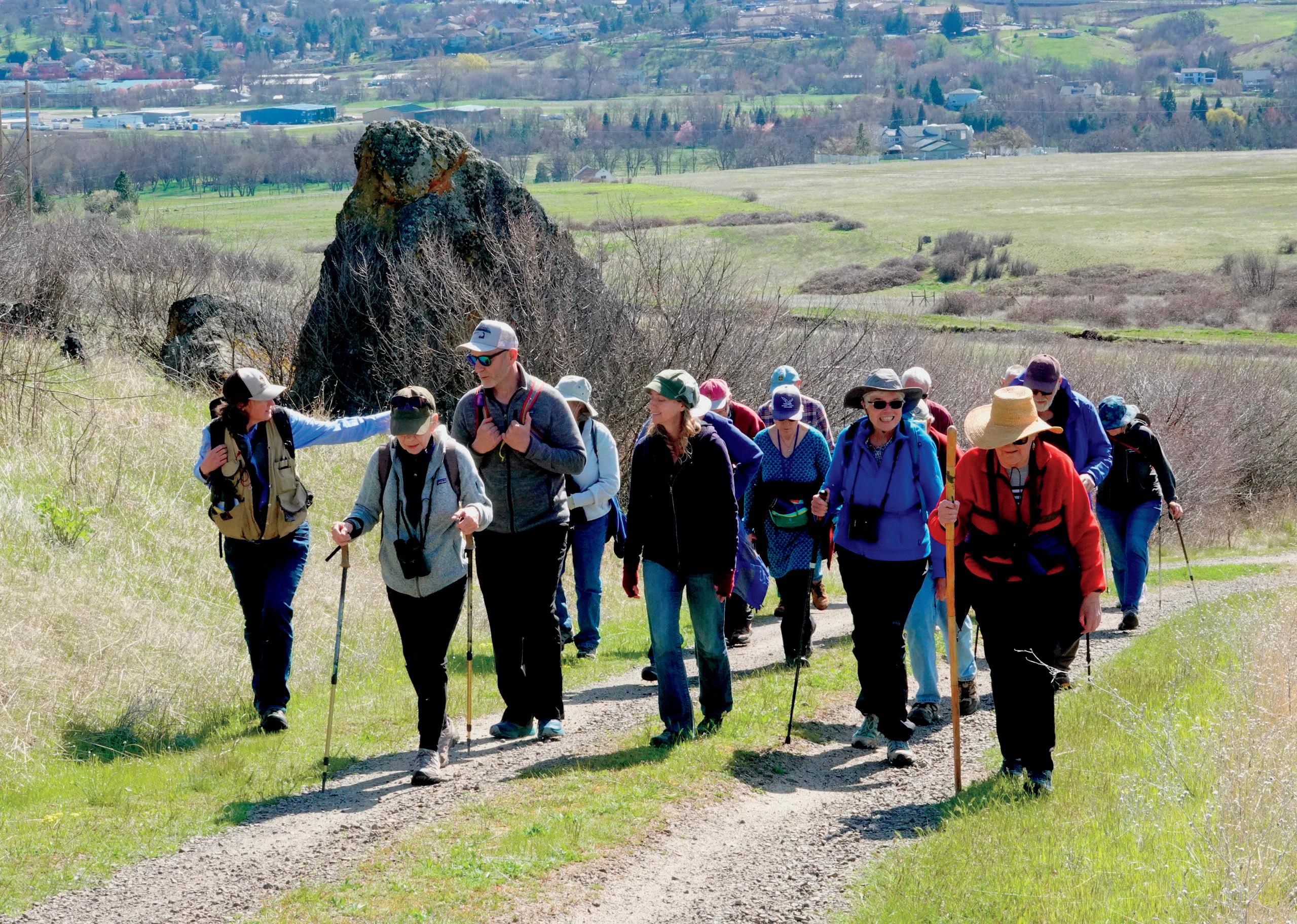


Spring Hike Series
HOW I RIDE

I called the Travel Trainer
“I had never used the bus and had no idea where to start. RVTD’s Travel Trainer showed me the way—from setting up my Umo account to understanding the routes and transfers.” — Gene
Explore inspiring conserved lands with experienced naturalists in our spring hike series Join us on our preserves for events like Open Lands and Stewardship Days Visit our website to learn about becoming a member, or to discover how you can help as a volunteer
G O O U T S I D E W I T H U S For People. For
www.landconserve.org Getting there together since 1975.
Nature. Forever.
230219
…
JANE VAUGHAN
Poet Lawson Inada Reflects On Life And Work After Winning SOU’s President’s Medal
In January, Southern Oregon University honored three retired faculty members with its highest award: the President’s Medal. One award went to Lawson Inada, Oregon’s former poet laureate. In addition to Inada, medals also went to the artist Betty LaDuke and linguist Grace Tapp Kocks (“Señora Chela” to SOU folks). JPR’s Jane Vaughan recently had the pleasure of meeting Lawson Inada for the first time, and we share their interview here.
Lawson Inada has published four collections of poetry, won the Oregon Book Award and the American Book Award and served as the fifth poet laureate for the state of Oregon.
But he still seems to find special glee in talking about his time at Southern Oregon University, which spanned from 1966 until 2002. He said he felt that teaching was such a privilege that he would have done it for free. At 85 years old, he’s spent some time reflecting on the years he spent at SOU, then known as Southern Oregon College, and the changes that have happened since.
Inada is prone to fits of laughter as he talks, cracking himself up with stories from his past. His history, like mine, has included moving around and even living in some of the same places as me: Maine, Oregon, and New Hampshire. But his history also includes time spent in Japanese internment camps as a child. He’s said that experience and his love of jazz have been his greatest inspirations in his poetry.
Reading Inada’s work, there’s a strong evocation of the places and people he’s been surrounded with. Memory is clearly important to him, whether that memory is necessarily positive or not. He writes sometimes of the physical body and the scars that are apparent there, but his mental impressions are critical, too. Talking with me, a reporter, we found a connection between our two fields, radio and poetry, in that both are about sharing important experiences and stories with those who are willing to listen.
This interview has been condensed and edited for clarity.
Last week you were awarded Southern Oregon University’s President’s Medal. How do you feel about that?
I thought it was a wonderful honor. I can’t say that well, all the years I spent since 1966 after university, I spent [thinking] ‘Well, one of these days, I’m going to be getting a presidential medal of honor.’ But it was a wonderful surprise. And I really appreciated my time working here on campus.
I understand you were a bass player and a jazz lover, and you had sort of considered a career in music. Why did you turn to poetry instead?
I took up bass late, when I was in college. And then after a while, I realized, I’ve been writing since day one as a kid. And so I just realized that for me to be really proficient on the bass and to try to become a true professional and artist about it, boy, it would take me years to show my respect to the great artists who are musicians. It’s not anything that you take up and in the next couple of years, there you are. With poetry, though, it’s something I could do. Because poetry is something that you do. It’s maybe like being a painter or a ballet dancer, you do it because you do it. For the love of it, for expression.
You and I have lived in a lot of the same places, in Maine and Oregon, and I lived in New Hampshire, you worked in New Hampshire. I notice that a lot in your poetry, and I’m wondering how you’re using your poetry to sort of define a sense of place or a sense of home as you’re moving to a new location.
Poetry is something where you’re a free agent. It is like being a painter in the way in which, when the moment strikes you, then that’s what you do. And so I’ve used poetry to express many, many things in different ways what comes to me. And I can share a poem. As far as a poem goes, I thought I’d share something fairly simple or short and sweet. This is also by way of tribute to this university because in the 80s, a speaker came to the university and gave a talk and he was a Tibetan Buddhist teacher. He gave a talk, and I met him that night, and I’ve since become his student. His name is Chhoje Rinpoche. I wrote this

MARCH/APRIL 2024 JEFFERSON JOURNAL | 17
JPR TWO-WAY
Lawson Inada has won many awards for his poetry, and served a period as Oregon Poet Laureate. But the retired Southern Oregon University professor now has another award for his shelf: the SOU President’s Medal.
JPR Two-Way
Continued from previous page
poem after meeting him, learning from him, from that talk. And so this is a poem called “In The Stillness.”
Lightning arises
In the stillness
A wave arises
In the stillness
A snake unwinds
In the stillness
The fountain freezes
In the stillness
The fountain flows
In the stillness
Dogs are warm
In the stillness
Form is emptiness
In the stillness
Emptiness is form
In the stillness
Watchful awareness
In the stillness
Realize the essence
In the stillness
In the stillness
In the stillness
It’s wonderful. Thank you for sharing that.
We can do all fancy schmancy with poetry, we can do all kinds of — do you write poetry?
Not really, no. I did when I was younger, but not anymore. I keep a journal.
Okay, keep a journal or get some Post It notes because we’re being struck by these thoughts all the time while we’re living in the stillness, so to speak. Things happen, and you get these flashbacks, and it’s all very, very important because we tend to live very busy lives, but who knows what’s going on inside ourselves?

Jane Vaughan is a regional reporter for JPR News.








A N D The Café EAT . BUY . LOVE LOCAL 9 4 5 S R i v e r s i d e A v e • ( 5 4 1 ) 7 79 - 2 6 67 • m e d f o r d f o o d c o o p

NPR NEWS
FOCUS ENVIRONMENT
ALEX BAUMHARDT
Chinese Billionaire And A Redding, California Family Own Hundreds Of Thousands Of Acres Of Oregon Timberland
AChinese billionaire and a Redding, California timber family have become among the largest private landowners in the U.S. following major purchases of Oregon forests.
Those findings come from The Land Report, a magazine that details annually the top 100 private landowners in the U.S. Its most recent report was published Jan. 9.
The magazine’s research team found that Sierra Pacific Industries’ 2021 acquisition of 175,000 acres of forestland and mills, through its buyout of a family-owned timber company in Douglas County, made the Redding, California based Emmerson Family the largest private landowner in the U.S. The family, which owns Sierra Pacific, has 2.4 million acres of forests logged for timber in Oregon, California and Washington.
The report also found that a Chinese billionaire and entrepreneur, Tianqiao Chen, became the second largest foreign owner of U.S. land following the purchase, through his investment company, of nearly 200,000 acres of forestland in Klamath and Deschutes counties nearly a decade ago. The Irving family of Canada is the largest foreign landowner, with more than 1.2 million acres of timberland in Maine.
Chen’s fortune comes from an online gaming company he founded in 1999 called Shanda Interactive Entertainment.
Chen’s stake in Oregon has drawn the ire of U.S. Rep. Lori
Chen’s stake in Oregon has drawn the ire of U.S. Rep. Lori Chavez-DeRemer, an Oregon Republican, who expressed concern over Chen’s membership in the Chinese Communist Party.
Chavez-DeRemer, an Oregon Republican, who expressed concern over Chen’s membership in the Chinese Communist Party.
“Foreign ownership of United States’ land by our adversaries is a serious problem that has rightfully sparked unease among farmers, ranchers and foresters across the country,” Chavez-DeRemer said in a news release last Friday. “I’m deeply concerned that a member of the Chinese Communist Party owns tens of thousands of forestland acres — one of our most precious and finite resources — in my district.”
Chavez-DeRemer is among several members of Congress who have proposed legislation during the last year that would limit the purchase of U.S. land by foreigners, especially from China.
Chen and his investment company said in a news release Tuesday that they did not try to hide the purchase of Oregon land. The company’s communications director, Jason Reindorp, said in an email to the Capital Chronicle that they

MARCH/APRIL 2024 JEFFERSON JOURNAL | 19
PHOTO COURTESY OF OREGON.GOV
About 33,000 acres of the Oregon land owned by Chinese billionaire Tianqiao Chen and his investment firm is west of Bend, near the Deschutes National Forest.
JPR News Focus: Environment
Continued from previous page
asked the U.S. Treasury Department’s Committee on Foreign Investment to review the purchase before it was made.
“They determined there were absolutely no national security concerns,” Reindorp said.
Foreigners own more than 43 million acres of agricultural land in the U.S., or about 3.4% of the nation’s agricultural land, according to data from the U.S. Department of Agriculture. About half of that foreign-owned land – more than 19 million acres – is classified as forestland, according to an analysis of USDA data by the American Farm Bureau Federation.
Chinese owners make up less than 1% of foreign-owned acreage in the U.S., according to the USDA. Canadians are the largest foreign investors in U.S. agricultural land, owning about one-third of those 43 million acres. Much of that is forestland in Maine, according to the department.
Canadian acquisition
Eric O’Keefe, editor-in-chief of The Land Report, said researchers became aware of Chen’s holdings this year after they learned of his 2018 purchase of 500,000 acres in Ontario, Canada from another person on The Land Report’s top 100 list. That led them to search for Chen’s other North American holdings.
The nearly 200,000 Oregon acres were originally purchased in 2015 by an investment firm called Whitefish Cascade Forest Resource, which Chen’s wife and co-founder, Chrissy Luo, regis-
tered as an Oregon business in 2014, according to filings from the Oregon Secretary of State’s office. Whitefish paid $85 million to buy the land from Fidelity National Financial Ventures, another investment firm. Whitefish was renamed Shanda Asset Management in 2017, according to Oregon tax filings. Chen is its CEO.
Chen is 82nd on The Land Report’s top 100 list, which includes all landowners, regardless of nationality.
O’Keefe said Chen has taken a low-key approach to his acquisitions. Fidelity announced the purchase by Whitefish in a 2015 press release and that was that.
“Such a low-key approach is standard operating procedure with large portfolios of institutional-grade landholdings in timberland, farmland and ranchland,” O’Keefe said in an email.
Chen’s large holdings on the list could shrink in the coming year. He’s been trying for several years to sell about 33,000 acres of his Oregon forestland west of Bend. The current price is about $95 million.

Alex Baumhardt is a reporter for Oregon Capital Chronicle. The Oregon Capital Chronicle is a professional, nonprofit news organization. They are an affiliate of States Newsroom, a national 501(c)(3) nonprofit supported by grants and a coalition of donors and readers. The Capital Chronicle retains full editorial independence, meaning decisions about news and coverage are made by Oregonians for Oregonians.







Beach Creek is a neotraditional neighborhood of 55 smartly designed view homes focused on e cient living, wise resource use, and a low carbon footprint. For more information or to schedule a tour, please visit
or call us at 541-944-7730.
IN THE HEART OF ASHLAND SALES OFFICE - OPEN DAILY 1125 WHEELDON WAY ASHLAND, OREGON an innovative community by plan. develop. build (541) 944-7730 sales@kda-homes.com www.kda-homes.com 6 7 8 10 11 SOLD SOLD 12 SOLD 14 26 25 SOUTHERN OREGONRAILROAD 28 29 40 41 43 15 17 18 19 23 22 21 20 30 31 32 33 34 38 37 36 PENDING PENDING PENDING PENDING CREEK COMMUNITY GARDEN 4 SOLD SOLD E D N E M O P S H SOLD 39 13 42 44 16 9 3 2 1 35 45 46 47 48 49 54 55 52 51 53 50 SALES OFFICE 1125 WHEELDON WAY ASHLAND OREGON 24 SOLD WHEELDON WAY HAGENWAY HAGENWAY H A GEN W A Y VILLAGE PARK DRIVE N. MOUNTAIN AVE CENTRAL BIKEPATH SOLD SOUTHERNCENTRALBIKEPATH OREGON RAILROAD NEW ENERGY EFFICIENT HOMES STARTING AT $495,000
www.Kda-homes.com

INSIDE THE BOX
SCOTT DEWING
We have all the necessary technologies to build a secure, nation-wide e-voting system. What we do not have is the political will and leadership to make it a reality.
Toward A National E-voting System
It’s another presidential election year and a reminder that our country still doesn’t have a secure, nationwide e-voting system even following all the turmoil of the 2020 election. We have developed all the technologies we need in order to achieve this—data encryption, two-factor and biometric authentication, smartphones, smart cards, cloud computing, high-speed fiber optic connectivity—and yet here we are, four years later, with the same system.
We already use the above listed technologies (as well as others) to daily transact $300 billion in U.S. markets. This includes online shopping transactions, stock market transactions (many of which are automated by trading algorithms), supply chain purchases by corporations, etc. Throw U.S. government transactions in there, including classified programs by various intelligence agencies that are not public record, and I’d wager that daily transaction number would at least double.
Most of us use credit and debit cards daily. We access our bank accounts via apps on our smartphones. We automate our bill payments using online services. We pay our taxes online. We access our health records online and automate prescription refills.
We do all of this because it is convenient and gives us more time to chainsmoke episodes of our favorite shows on Netflix, which reminds me that we access all of our entertainment content online too.
In short, we’ve completely digitized our lives, outsourcing much of it to online services and connected apps on our smartphones. We’ve entrusted our personal finances and the entire global economy to these digital systems.
But when it comes to voting, most of us will automatically default to a position of skepticism. This includes yours truly. In 2004, I wrote a column in this same space about “black box voting” or e-voting as it is commonly referred to today.
“In its current form,” I wrote, “e-voting threatens to jeopardize our Constitutional rights by placing control of the voting system in the hands of the few. In its current form, e-voting is a flawed system ripe with opportunity for inaccurate vote tallying that would be unauditable and therefore unchallengeable.”
I stand by that statement. But I also believe that we could develop a secure, nation-wide e-voting system that would ensure rather than jeopardize our Constitutional rights.
What I propose is development of an e-voting system using the same technologies we have already implemented for secure online transactions, global commerce and finance. Are these impervious to hacking and compromise? Nope. No digital system is.
According to the Federal Trade Commission (FTC), credit card fraud has increased 30 percent since 2021 with consumers having lost a reported $8.8 billion in scams in 2022. One of the primary difficulties with preventing credit card fraud is that credit card processing is a fragmented global system with no unifying standards.

We could have a secure, nationwide e-voting infrastructure built with data encryption, 2-factor/biometric authentication, smart phones, smart cards, and cloud computing. Additionally, we could implement blockchain to create a distributed, unalterable record of voting “transactions” (i.e., what candidate or ballot measure a user voted for).
Every U.S. citizen who registered to vote would be issued a national voting smart card that would be paired to a PIN that they set when they registered. This card would work similar to an ATM card. At the voting center, a registered voter would simply insert their card into a secure voting machine, enter their pin, then follow the on-screen instructions to cast their votes.
Additionally, secure voting apps developed for standard smartphone platforms could be used to vote using a combination of PIN and biometric fingerprint scanning. The app would be paired with the voter registration card to mitigate fraud. Essentially, it would be like Apple Pay for voting.
In order for the system to be functional and secure, it would need to be a unified system with unifying standards developed by a consortium of government and non-government organizations. It would also have to be transparent and auditable by third parties.
We have all the necessary technologies to build a secure, nation-wide e-voting system. What we do not have is the political will and leadership to make it a reality. Our politicians seem content to keep the system we currently have with all of its flaws and potential for corruption.
Our current system will remain broken to the degree we accept it being broken.
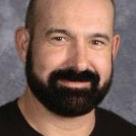
Scott Dewing is a technologist and writer. He works with and writes about high tech from his home office located inside a low-tech barn in Carver, Oregon.
MARCH/APRIL 2024 JEFFERSON JOURNAL | 21
World-Class Musicians, Thrilling Performances

40TH SEASON
Presenting world-class ensembles in the Southern Oregon University Music Recital Hall in Ashland, Oregon.

Brentano Quartet with Hsin-Yun Huang, viola
Friday, April 5 · 7:30pm
“The Brentanos are a magnificent string quartet… This was wonderful, selfless music-making.”
London Times


Fullana,
Saturday, April 20 · 3pm “rising star” BBC Music Magazine “amazing talent”
Conductor Gustavo Dudamel
“a paragon of delicacy”
San Francisco Classical Voice

TICKETS: ChamberMusicConcerts.org · 541-552-6154 All concerts take place at the Southern Oregon University Music Recital Hall, 450 S Mountain Avenue, Ashland, Oregon.
Francisco
violin, with Tomomi Sato, piano

 ALLISON FROST
ALLISON FROST
Industry
leaders say the pandemic and other factors shifted consumer habits
Oregon Craft Brewers See Continued Decline In Draft Beer Sales, More Closures
Oregon’s storied craft brewing industry suffered one of its worst years in 2023, with depressed draft beer sales and rising costs creating more pressure than some of the state’s businesses could bear.
According to the Oregon Brewers Guild, Oregon is home to about 400 breweries, brewpubs and taprooms, which collectively provide 50,000 jobs and generate nearly $9 billion in economic output. But the state lost around 30 of those businesses last year, and even more have contracted or are seriously struggling.
“We are seeing national trends towards canned cocktails, Seltzers and more nonalcoholic beer options,” said Sonia Marie Leikam, the co-owner of Leikam Brewing and the vice president of the Oregon Brewers Guild. “Those make up now about a third of our sales. They are lower profit margins for us, and that impacts our bottom line.”
Leikam says that, like other small craft brewers, she works another job in addition to her time at the family brewery.
“We also are spending just a ton more time and energy creating events,” she said. “So we now have crafting classes and a book club and comedy nights. Really anything that the community wants, we offer our space for those activities to drive folks into the tap room.”
At its peak before the pandemic, Laurelwood Brewing Company had three restaurant locations, in addition to three retail outlets at the Moda Center and two others at the Portland airport. Over time, said owner Mike De Kalb, the profit margins just disappeared. Laurelwood Brewing Company closed its last retail location late last year.
“The economy was different back then. People’s habits were different. People wanted to go out, they wanted to get out of the house and go frequent tap rooms,” De Kalb said. “All the streaming services, DoorDash, Uber Eats, people could order things in … People’s habits changed. People’s habits have been ingrained over two years of ordering, online services, grocery stores, those sorts of things. And, when we opened up again, we had an initial rush, but then they went back to their old habits.”
Leikam says breweries will continue to try to adapt and respond to things like “Dry January” and ad campaigns that discourage drinking alcohol.
“I think legal and moderate consumption of alcohol is absolutely reasonable and should be supported,” she said.
But she also pointed out that alcohol is a big industry in the state. “Beer, wine, cider, spirits — these are all huge parts of the Oregon economic machine. The third largest source of revenue for the state is this sector.”

After 10 years, Medford’s Opposition Brewing closed its doors in September, 2023.
Leikam has a message for people who want to see the industry survive.
“Make that extra stop. If you’re going to buy beer, buy it directly from a brewery tap room or a bottle shop,” she said. “Schedule a get together with friends, hold a PT [Parent Teacher] night at your local brewery. We offer nonalcoholic beverages too. We have community gathering spaces. We have philanthropy nights. Reach out to us. Talk to your local brewery. We’re here for you.”

Allison Frost is the senior producer and occasional host of Oregon Public Broadcasting’s daily talk show “Think Out Loud.”
MARCH/APRIL 2024 JEFFERSON JOURNAL | 23
JPR NEWS FOCUS ECONOMY
violin, piano
Classics & News Service








FM Transmitters provide extended regional service. (KSOR, 90.1FM is JPR’s strongest transmitter and provides coverage throughout the Rogue Valley.)
FM Translators provide low-powered local service.
Translators
Big Bend 91.3 FM
Brookings 101.7 FM
Burney 90.9 FM
Monday through Friday..
Morning Edition
First Concert
Siskiyou Music Hall
All Things Considered
The Daily
Exploring Music
State Farm Music Hall Saturday..
Weekend Edition
First Concert
Metropolitan Opera
Played in Oregon
The Chamber Music
Society of Lincoln Center
Stations
KSOR 90.1 FM
ASHLAND
KSRG 88.3 FM
ASHLAND
Camas Valley 88.7 FM
Canyonville 91.9 FM
Cave Junction 89.5 FM
Chiloquin 91.7 FM
Coquille 88.1 FM
Metropolitan Opera
March 2 – Ernani by Giuseppe Verdi
March 9 – La Forza del Destino by Giuseppe Verdi
March 16 – Turandot by Giacomo Puccini
March 23 – Norma by Vincenzo Bellini
March 30 – Requiem by Giuseppe Verdi
April 6 – L’Elisir d’Amore by Gaetano Donizetti
April 13 – Die Fledermaus by Johann Strauss
April 20 – La Rondine by Giacomo Puccini
April 27 – Fire Shut Up in My Bones by Terence Blanchard
KSRS 91.5 FM
ROSEBURG
KNYR 91.3 FM
YREKA
KOOZ 94.1 FM
4:00pm All Things Considered
5:00pm New York Philharmonic
7:00pm State Farm Music Hall
Sunday..
5:00am Weekend Edition
9:00am Millennium of Music
10:00am Sunday Baroque
12:00pm American Landscapes
1:00pm Fiesta!
2:00pm Performance Today Weekend
4:00pm All Things Considered
5:00pm Chicago Symphony Orchestra
7:00pm State Farm Music Hall
MYRTLE POINT/COOS BAY
Coos Bay 90.5 FM / 89.1 FM
Etna / Ft. Jones 91.1 FM
Gasquet 89.1 FM
Gold Beach 91.5 FM
KZBY 90.5 FM
COOS BAY
KLMF 88.5 FM
KLAMATH FALLS
KNHT 102.5 FM RIO DELL/EUREKA
Grants Pass 101.5 FM
Happy Camp 91.9 FM
Lakeview 89.5 FM
Langlois, Sixes 91.3 FM
LaPine/Beaver Marsh 89.1 FM
KLDD 91.9 FM
MT. SHASTA
KHEC 91.1 FM
CRESCENT CITY
KWCA 101.1 FM REDDING
Lincoln 88.7 FM
Mendocino 101.9 FM
Port Orford 90.5 FM
Weed 89.5 FM

24 | JEFFERSON JOURNAL MARCH/APRIL 2024 STATIONS & PROGRAMS
5:00am
7:00am
12:00pm
4:00pm
6:30pm
7:00pm
8:00pm
5:00am
8:00am
10:00am
2:00pm
3:00pm
COURTESY OF THE MET
L’Elisir d’Amore by Gaetano Donizetti
Rhythm & News Service





3:00pm Folk Alley
5:00pm All Things Considered
6:00pm American Rhythm
8:00pm The Retro Cocktail Hour
9:00pm The Retro Lounge
10:00pm Late Night Blues
12:00am Turnstyles

FM Transmitters provide extended regional service.
FM Translators provide low-powered local service.

Stations
KSMF 89.1 FM
ASHLAND

KSBA 88.5 FM
COOS BAY
KSKF 90.9 FM
KLAMATH FALLS
KNCA 89.7 FM BURNEY/REDDING
KNSQ 88.1 FM MT. SHASTA
KVYA 91.5 FM
CEDARVILLE/ SURPRISE VALLEY
News & Information Service


Sunday..
5:00am Weekend Edition
9:00am TED Radio Hour
10:00am This American Life
11:00am The Moth Radio Hour
12:00pm Jazz Sunday
2:00pm American Routes
4:00pm Sound Opinions
5:00pm All Things Considered
6:00pm The Folk Show
9:00pm WoodSongs Old-Time Radio Hour
10:00pm The Midnight Special
12:00am Turnstyles
Translators
Callahan/Ft Jones 89.1 FM
Cave Junction 90.9 FM
Grants Pass 97.5 FM
Port Orford 89.3 FM
Roseburg 91.9 FM
Yreka 89.3 FM





Stations
KSJK AM 1230
TALENT
KAGI AM 930
GRANTS PASS
AM Transmitters provide extended regional service.
FM Transmitter
FM Translators provide low-powered local service.

KTBR AM 950 ROSEBURG
KRVM AM 1280 EUGENE
KSYC 103.9 FM YREKA
KHWA 102.3 FM
MT. SHASTA/WEED
KPMO AM 1300 MENDOCINO
KNHM 91.5 FM BAYSIDE/EUREKA
KJPR AM 1330
SHASTA LAKE CITY/ REDDING
BBC World Service
Translators
Ashland/Medford 102.3 FM
Klamath Falls 90.5 FM / 91.9 FM
Grants Pass 97.9 FM
Redding 96.9 FM
Roseburg 96.3 FM
Eugene 98.7 FM
MARCH/APRIL 2024 JEFFERSON JOURNAL | 25 STATIONS & PROGRAMS
Monday through Friday.. 5:00am Morning Edition 9:00am Open Air 3:00pm Q 4:00pm All Things Considered 6:00pm World Café 8:00pm Folk Alley (M) Mountain Stage (Tu) American Routes (W) The Midnight Special (Th) Open Air Amplified (F) 10:00pm Turnstyles 3:00am World Cafe Saturday 5:00am Weekend Edition 9:00am Wait Wait...Don’t Tell Me! 10:00am Radiolab 11:00am Snap Judgement 12:00pm E-Town 1:00pm Mountain Stage Monday through Friday 12:00am BBC World Service 7:00am 1A 9:00am The Jefferson Exchange 10:00am Here & Now 12:00pm BBC News Hour 1:00pm Today, Explained 1:30pm The Daily 2:00pm Think 3:00pm Fresh Air 4:00pm The World 5:00pm On Point 6:00pm 1A 7:00pm Fresh Air (repeat) 8:00pm The Jefferson Exchange (repeat of 9am broadcast) 9:00pm BBC World Service Saturday.. 12:00am BBC World Service 7:00am Inside Europe 8:00am Day 6 9:00am Freakonomics Radio 10:00am Planet Money/How I Built This 11:00am Hidden Brain 12:00pm Living on Earth 1:00pm Science Friday 3:00pm To the Best of Our Knowledge 5:00pm Radiolab 6:00pm Selected Shorts 7:00pm BBC World Service Sunday.. 12:00am BBC World Service 8:00am On The Media 9:00am Throughline 10:00am Reveal 11:00am This American Life 12:00pm TED Radio Hour 1:00pm The New Yorker Radio Hour 2:00pm Fresh Air Weekend 3:00pm Milk Street Radio 4:00pm Travel with Rick Steves 5:00pm To the Best of Our Knowledge 7:00pm
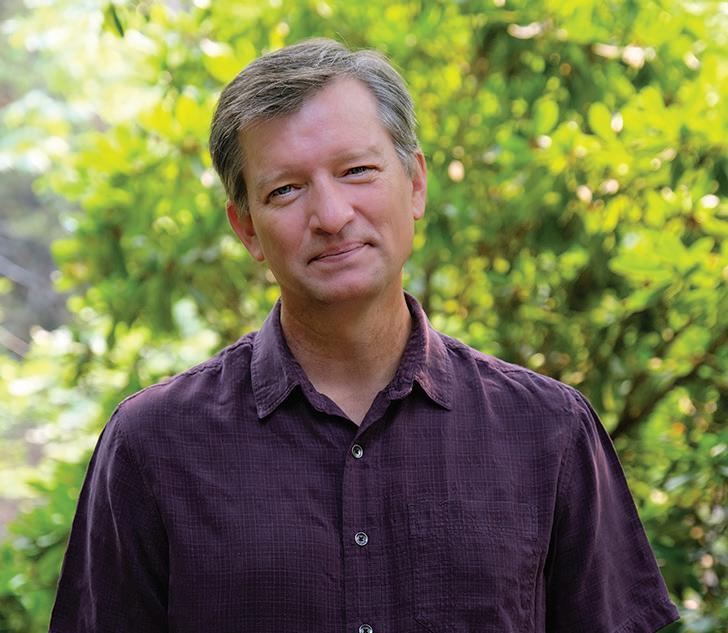

Since 1993
Saturdays at 9pm on Rhythm & News


Terry Gross provides a lively look at entertainment and the arts, combined with in-depth personality interviews, to make you feel like you’re in the middle of the arts scene.
Weekdays at 3pm & 7pm
Fresh Air Weekend Sundays at 2pm JPR’s News & Information Service



NEWS BRIEFS
Coquille Tribe’s Long Bet On Contentious New Casino May Still Pay Off
Justin Higginbottom
The Coquille Indian Tribe has been trying to open a new casino in Medford for over ten years. After hitting bumps along the way — including a hard ‘no’ from the feds in 2020 — the project is again moving forward. Among its most vociferous critics: other regional tribes.
The Coquille Indian Tribe’s proposed new casino in Medford, although located on land they own, is over 150 miles from their reservation near the Oregon Coast.
To build the casino, and collect its gaming revenue, the tribe needs to put the land under federal trust.
The Department of Interior rejected that plan in 2020. But the Biden administration is moving forward with an environmental assessment, the results of which are expected soon.
Russell Attebery, chairman of Northern California’s Karuk Tribe, has joined other tribal leaders as well as senators from Oregon and California in opposing the casino.
He says it would cut into his tribe’s gaming revenue and lead to less money for public services. He also warned that the precedent could spread harmful competition between tribes.
“To open the door to reservation jump and open casinos that are not [in] their homelands could be devastating to Indian country,” said Attebery.
Ray Doering, who works with the Coquille Indian Tribe on economic development, says criticism of their proposal comes from a fear of competition.
“They have a market all to themselves. They’ve had a monopoly for a long time. And they don’t want to lose that monopoly. And they don’t want to have to face the competition,” said Doering.
Assuming a favorable environmental assessment, the Bureau of Indian Affairs will have a public comment period before making a final decision.
Struggling With Oversaturation, Oregon’s Cannabis Industry Calls For New Restrictions
Nathan Wilk
Leaders of Oregon’s cannabis industry are calling for the state to permanently restrict the number of new marijuana businesses.
To date, Oregon has approved over 3,000 licenses for the farming, processing or sale of marijuana. Industry advocates say

since businesses can’t export to other states, that’s far more than what their customers need.
“There are so many businesses competing for the same amount of market share that it’s just not feasible,” said Mike Getlin, the board chair of the Cannabis Industry Alliance of Oregon.
Since June 2018, a series of legislative and informal moratoriums have stopped additional licensure. However, the version that’s currently in place is set to expire this April.
The Oregon Liquor and Cannabis Commission said if that happens, it would have to start processing applications again, and the agency doesn’t believe it’s in the legal position to create its own pause.
Now, Getlin is calling on state lawmakers to take action. He’s asking them to prevent new licensure until there is significant population growth.
The proposal would require that before any new licenses are issued, there is less than one license for every 7,500 smoking-age adults in Oregon. For processing and wholesale licenses, this would need to be below one in 12,500.
Getlin said the state is far above that threshold right now. He said this change wouldn’t stop the current overcrowding, but it will prevent things from getting worse.
“What we’re fighting for is not to fix the Oregon system,” said Getlin. “It is simply to not accidentally have a big old knife stuck in its heart.”
Under the bill, marijuana businesses could still sell and purchase existing licenses.
As part of HB 2515, the proposal died in committee last year. Getlin said he hopes a bill with similar language makes it across the finish line in this year’s legislative session.
A New Study Finds A Critical Vitamin For Salmon In Rivers
Justin Higginbottom
From dams to drought, salmon face a lot of threats in the West. Add thiamine deficiency to the list. New research sheds light on where salmon could get this vitamin.
Researchers have known salmon’s ocean diet impacts their thiamine levels. Scientists at Oregon State University have called “thiamine deficiency complex” a growing threat. For example, a diet rich in anchovies rather than sardines can lead to a deficiency.
But for the first time, scientists have measured the vitamin’s availability in freshwater rivers where the fish deposit eggs.
Christopher Suffridge, a microbiologist at OSU, helped author the recent report that looked at Chinook salmon spawning habitats in California’s Sacramento River. His team found thi-
MARCH/APRIL 2024 JEFFERSON JOURNAL | 27
NEWS BRIEFS CONTINUTED
amine present in the river and sediment. And they think that could support salmon development.
He says it’s something to consider in salmon restoration efforts.
“We believe that including the microbes that live in the river and in the river gravels is important in understanding what makes a successful spawning habitat,” says Suffridge.
Several dams are coming down on the Klamath River along the Oregon-California border in 2024 with a goal of restoring salmon populations.
Suffridge says success could also depend on the ecology of the river’s floor where thiamine pools can support newly hatched fish.
ABLM Postpones Controversial
Southern Oregon Timber Sales For Third Time
Roman Battaglia
On January 22, two controversial timber sales in Southern Oregon’s Applegate Valley were postponed for a third time by the federal Bureau of Land Management.
The proposed Late Mungers and Penn Butte timber sales would open up over 800 acres of forest in the Applegate Valley to commercial logging. The auctions were scheduled to take place Jan. 25, but were abruptly rescheduled for April 25.
These sales, that include old-growth forest, have been fought since at least 2022 by environmental groups that argue commercial logging will increase wildfire risk and that the plan has gone ahead without proper environmental review.
“It sure does appear that the BLM is not very confident in the legality of these timber sales,” said George Sexton, conservation director for KS Wild, a conservation group suing to stop the sales.
BLM Public Affairs Specialist Kyle Sullivan said it’s common for timber sales to be delayed. The agency is still moving forward with the timber sales in late April. According to the BLM, the project will reduce forest density which will help slow the spread of wildfires. Sullivan said the agency has been getting more requests from logging companies to delay timber sales until closer to when logging would begin in May.
“BLM timber contracts typically last four years,” Sullivan said via email. “There are periods when operations need to be paused (high fire danger, too wet or snowy conditions). Timber prices fluctuate. By auctioning closer to when operations will begin, the timber value is better aligned with the harvest.”
The Late Mungers and Penn Butte timber sales are the first under a new forest management plan by the Medford BLM, known as the Integrated Vegetation Management Plan or IVM. It’s intended to speed up approval of forest treatment projects and improve forest resilience.
Critics, like Sexton, say the IVM plan cuts out opportunities for public comment, and fast-tracks logging of old-growth forests, removing habitat for the endangered northern spotted owl.
The lawsuit from KS Wild along with Cascadia Wildlands, Oregon Wild and the Soda Mountain Wilderness Council could force the BLM to conduct a more thorough environmental review of these projects before they’re put up for sale. Oral arguments are scheduled for early April.
New Seed Library In Redding Launches
Roman Battaglia
Instead of checking out books, you can now borrow seeds from the Redding Library. It’s part of a new program that will also offer gardening classes. Gardeners of all skill levels are now able to get free seed packets at the Redding Library.
This new program was funded by a grant from the U.S. Institute of Museum and Library Services and the California State Library, which helped to purchase a large quantity of seeds, including tomatoes, melons, corn and some types of herbs. Library Associate Stacey Weller started looking into the idea when patrons asked about creating a seed library in Redding.
“More and more community members and patrons were asking and I thought, ‘This would be a great thing to have.’ We have a lot of gardeners in our community and I think it has the chance to really take off and become a great resource,” Weller said.
She said there’s already been a lot of support from the community. In addition to purchasing seeds, the library received a large quantity of seed donations from local gardeners and businesses. Around 30 people also came to a seed packing party on Jan. 31 to help get the seeds ready for distribution.
Alongside giving out free seed packets to community members, Weller said there will also be classes to learn about general gardening as well as saving seeds for the future. She said the library will encourage people to donate seeds from their subsequent harvests to keep the program sustainable.
“We want to encourage people to learn how to save seed, not just to get seeds back for the library, but for themselves,” Weller said. “Because the more people grow out and save seed and continue to grow those same seeds, the better those varieties, those plants are going to become adapted and resilient to our area and our climate.”
The seed library is open to all community members, including those without a library card. Alongside the seeds, Weller said they’ve also put together a collection of gardening and seed-saving books for checkout.
“It’s an honor system,” Weller said. “We’re just asking people to take just what they need for their own home garden for this season. You can take a number of different varieties; we want you to try things out. But limit it to just one packet per variety.”
28 | JEFFERSON JOURNAL MARCH/APRIL 2024
In the future, Weller would like to expand the program to include seeds for native plants and classes for gardening and landscaping with them. A grand opening for the seed library is set for early March. The seed library will close for the year in mid-October.
Klamath Basin Irrigators, Tribes Sign Conservation Agreement, Interior Pledges $72M
Erik Neumann
On February 14, the U.S. Department of the Interior announced more than $72 million for the Klamath Basin.
The funding from the federal Bipartisan Infrastructure Law and Inflation Reduction Act is aimed at ecosystem restoration and agricultural infrastructure modernization.
The investment was announced in conjunction with a new memorandum of understanding signed by representatives from the Klamath, Yurok and Karuk tribes and the farming group Klamath Water Users Association. According to an Interior Department official, the agreement marks a level of cooperation between these groups that hasn’t been seen in a decade.
“Following months of consultation and discussions, we’re proud to formalize this partnership with Tribes and irrigators and make a shared commitment that will benefit the forests, watersheds, agriculture and abundant populations of migratory bird and fish species that are unique to this Basin,” wrote Interior Secretary Deb Haaland in a press statement.
The MOU says the groups will work together to identify restoration goals to improve water supply reliability for “ecosystem resilience, fish populations and wildlife refuges, and irrigation.”
With regular drought tightening demand, competition over water is an annual problem between farmers, tribes seeking to protect endangered and threatened fish species and the basin’s six national wildlife refuges that are major stopover points for migratory birds.
Despite the competition, money is one way to bring opposing parties to the table.
The full $72.7 million is broken down into $64 million “to restore the regional ecosystem and repair local economies.” This allocation will fully fund the Klamath Falls National Fish Hatchery by 2027. The hatchery is used to rear endangered sucker fish that are culturally significant to the Klamath Tribes. Also Included in the $64 million is $25 million for collaborative conservation efforts in the basin.
“By agreeing to common objectives and shared goals for the Klamath Basin restoration, we can move forward together — as a unified front — to secure critical funding needed for our region,” said Paul Simmons, executive director of KWUA in a statement.
“This cohesiveness creates a better chance for our projects to catch eyes at the federal and state levels and receive funding.”
Four million dollars will be used to support the 14,000-acre Agency-Barnes wetland restoration project at the Upper Klamath National Wildlife Refuge. The project will reconnect two units of Upper Klamath Lake to increase water storage and wetland habitat for migratory waterfowl and fish passage.
Another $1.8 million will be used for a feasibility analysis of modifications to water supply infrastructure for the Klamath Drainage District. A final $2.9 million will go to the Klamath Tribes, Yurok Tribe, Hoopa Valley Tribe, Karuk Tribe and Modoc Nation for projects to restore wetlands.
According to the MOU, within 30 days the tribes and KWUA will meet to identify specific restoration projects that could be completed within 1-2 years with federal and state funding. Within 60 days they’ll submit priority restoration projects to the Interior Department.
Pacific Power Seeks 17% Oregon Rate Hike; Average Bill Would Rise $30 Per Month
Courtney Sherwood
Pacific Power has asked the Oregon Public Utility Commission to approve a 16.9% residential rate hike, effective next year. The company estimates that would raise the average bill of residential customers by about $30 per month. If approved, the increase would go into effect in 2025.
The electric company says it’s trying to raise $304 million to pay for renewable power sources and invest in upgrades to the grid, and also to pay for costs associated with wildfires.
Wildfire expenses would include managing vegetation around power lines, as well as paying higher wildfire insurance premiums and creating what the company calls a “catastrophic fire fund.”
Pacific Power’s parent company, PacifiCorp, is facing multiple lawsuits over its role in Southern Oregon wildfires that destroyed 170 homes in 2020. It’s already agreed to pay hundreds of millions of dollars to settle some of those lawsuits.
In regulatory filings, PacifiCorp has estimated that it could face $2.4 billion in wildfire-related losses.
Pacific Power has about 574,000 customers in the state, spread across a number of communities, including parts of North and Northeast Portland, much of Southern Oregon, and parts of the Willamette Valley, the coast, and Central and northeastern Oregon.
The state’s largest electric utility, Portland General Electric, has more than 875,000 customers. PGE raised its rates by 18% at the start of 2024.
MARCH/APRIL 2024 JEFFERSON JOURNAL | 29

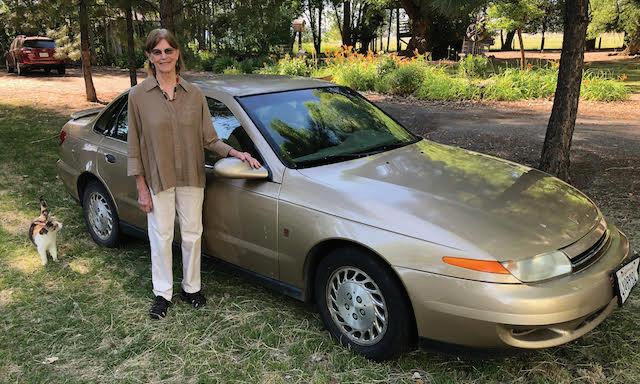
“For the past 20 years I’ve driven this dependable 2002 Saturn for my commute to work at the Modoc County library, while listening to the great news, music, and programs on JPR. People recognized me in that car because I’ve driven it for so long. In fact, I was at a gas station and a friend said he didn’t recognize me because I was in a different car! Now I’ve retired from being a county librarian, and I’m ready to pass the car on to a new owner by donating it to Jefferson Public Radio. It’s just a great way to be able to support JPR and NPR. We listen strictly to public radio, and really appreciate having that service available to us in our little [rural] community.”
Hassle Free · Tax Deductible · Free Pickup
Cheryl Baker, Alturas
2002 Saturn L-Series
 ELIZABETH CASTILLO
ELIZABETH CASTILLO
Why Ashland May Need To Step Up Prescribed Burns To Manage Dying Douglas Firs
In Southern Oregon, Douglas firs are dying. And climate change is making the problem worse with more severe droughts and hotter temperatures.
About 20% of Douglas firs in Ashland’s forests are dead or dying, according to Chris Chambers, the forest officer for the city of Ashland.
“There is a lot of what we call ‘red and dead’ out there, canopies that have turned from green to red,” he said. “Ashland has always prided itself on having this emerald necklace of forests surrounding our community and that emerald necklace is changing to something a little more ruby-colored these days.”
In Southern Oregon, Douglas firs are experiencing a “decline spiral,” according to researchers at Oregon State University and the U.S. Forest Service.
“In recent years, we’ve had drought, of course, but it’s been drought accompanied by higher temperatures, particularly in the summer. And that has really stressed trees to their limits,” said Max Bennett, a retired extension forester with OSU. “And then opportunistic insects come along and take advantage of these stressed trees and kill them.”
Bennett said the Douglas fir die-off mirrors similar issues happening to other conifers throughout the Pacific Northwest.

And the large tree mortality exacerbated by climate change is not confined to Ashland’s forests. Last year, the U.S. Forest Service found more than 1 million acres of dead or dying fir trees in Oregon and Washington, and dubbed the event “firmageddon.”
Dead and dying trees can fuel wildfires that threaten a community’s watershed, homes and businesses.
Chambers said that Ashland has been using prescribed burns for more than a decade to reduce that fire risk.
“In fact, we have about a 13,000-acre footprint of work that’s been completed since 2010,” he said. “That means we would like to be visiting those acres every 10 years with prescribed fire. We’ve gotten up to about 6 or 700 acres of burning per year now.”
But, he said, the city will need to add 500 to 600 more acres of prescribed burns each year given the impact of climate change.
“There’s going to be some smoky days from our burning,” Chambers said. “But the grim truth of where we’re at right now with climate change is we have to do this work and that’s not just unique to Ashland.”
Chambers added that he hopes Oregonians can see the value in prescribed burns and that Ashland residents will learn more about how the city’s forests are affected by the tree die-off.
“We’re going to be doing a lot of outreach in the next month to two months, taking people on tours,” he said. “Those discussions you have on the ground are the most important and really help inform people.”

Elizabeth Castillo is a producer for OPB’s daily talk show, “Think Out Loud.”
JPR NEWS FOCUS
ENVIRONMENT
2024
| 31
MARCH/APRIL
JEFFERSON JOURNAL

 MONICA SAMAYOA
MONICA SAMAYOA
The Confederated Tribes of Coos, Lower Umpqua and Siuslaw Indians said in a statement they are “extremely disappointed” in BOEM’s announcement.
Federal Government Finalizes Floating Offshore Wind Areas Off The Oregon Coast
Oregon’s southern coast is one step closer to producing floating offshore wind.
On February 13, the U.S. Department of Interior’s Bureau of Ocean Energy Management announced two final floating offshore wind energy areas off the coast of Coos Bay and Brookings. The two areas cover approximately 195,000 acres, about 25,000 acres less than what was stated in a proposal brought forth to the public last August.
BOEM, the federal agency charged with identifying, proposing and leasing the ocean areas needed, said in a press release that the two areas were identified after extensive feedback and input from federal government partners, state, tribal, and local residents. The results are based on “reducing potential conflicts of ocean users, particularly on commercial fishing.”
“BOEM values its close coordination with the State of Oregon as we continue to work together to maintain a robust and transparent offshore wind planning process,” BOEM Director Elizabeth Klein said in the release. “We will continue to work closely with Tribal governments, federal and state government agencies, ocean users, coastal communities and all interested stakeholders as we move forward with our environmental review.”
The announcement was accompanied by a statement from Oregon’s governor acknowledging the opportunities floating offshore wind could bring to the state. But tribes along the coast responded by saying concerns they have about offshore wind energy developments have still not been addressed.
In her statement, Oregon Gov. Tina Kotek said floating offshore wind is likely to play an important role in meeting the state’s renewable energy goals by 2040. She said it also provides an economic opportunity for the Oregon Coast.
Last year, Kotek, along with several state agencies, called on the federal government for more research on cultural, environmental, and marine and land species impacts. She said the state is committed to developing a roadmap to inform offshore wind opportunities that will ensure communities and tribal nations are consulted throughout the process.
“We will continue to promote active engagement with Tribal nations, local communities, and other ocean users in the state,” she said in a statement. “We will ensure that all decisions are transparent and based upon the best available science and knowledge.”
As a crucial climate benchmark in reducing greenhouse gas emissions and transitioning to renewable energy inches closer, offshore wind development has come as a top contender in helping the state achieve its climate goals.
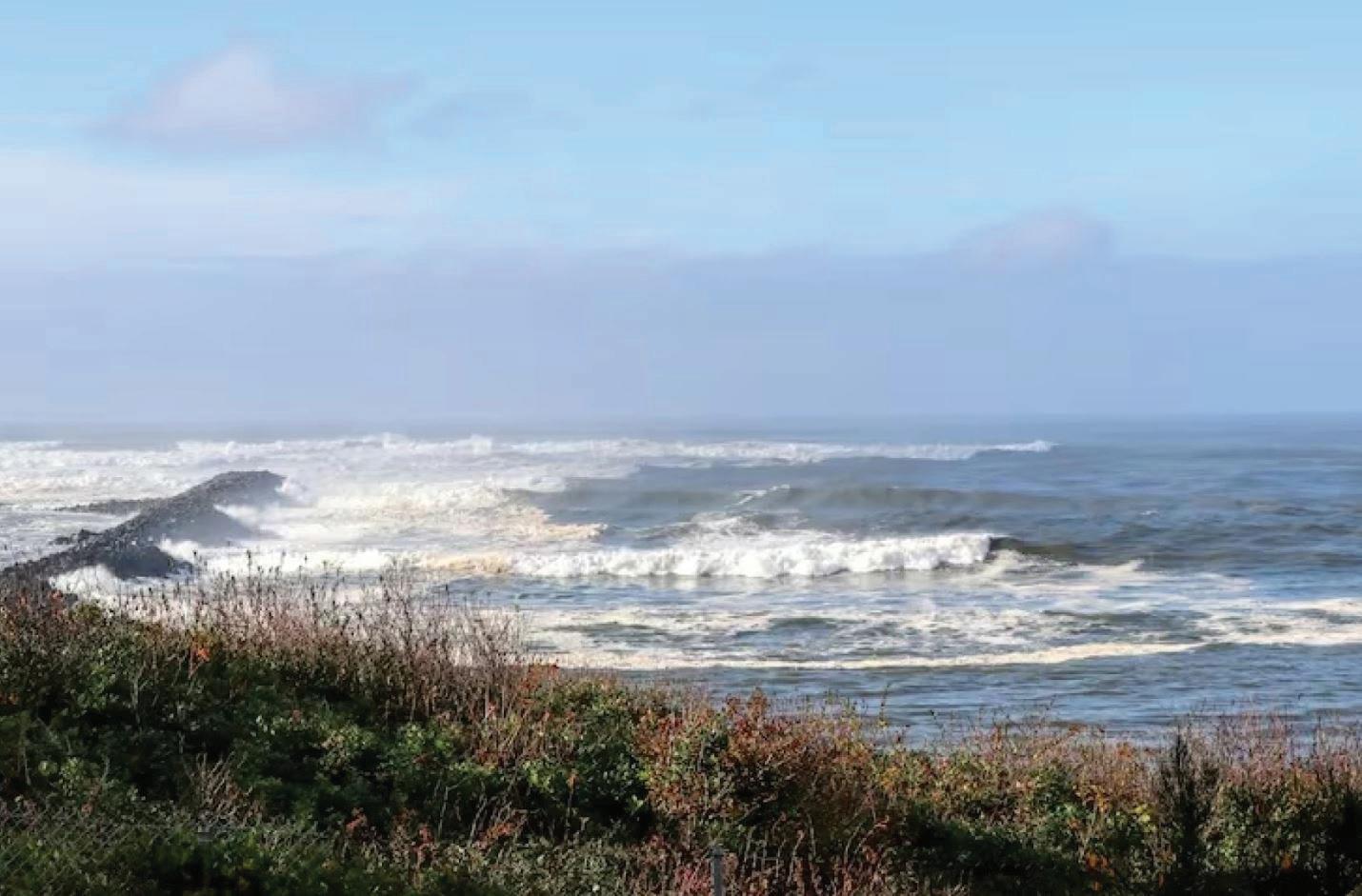
But the federal government’s announcement of the potential of floating offshore wind off the Southern Oregon coast prompted pushback from local community members, tribal members and the fishing industry last year. People from those groups called for a pause to better understand environmental impacts. They also felt that the federal government was not providing them with the answers they were seeking or opportunities for meaningful public engagement.
Now, Oregon lawmakers have put forward House Bill 4080, which would require the state to develop a roadmap defining standards for offshore wind energy. It would also support state policy to include extensive engagement between impacted communities and tribes as well as developing labor standards.
Nicole Hughes, director of advocacy group Renewable Northwest, said HB 4080 would also allow the Oregon Department of Land Conservation and Development to oversee broader stakeholder input.
“We feel like those are important things to establish before this process gets going,” she said. “Our desire is for that bill to pass and for the DLCD to start working on the road map so that we can have those conversations concurrent to the BOEM process.”
Hughes said she’s feeling excited that the governor is focused on putting resources toward developing a roadmap. But she said the state will need more funding and she hopes to see some support from the federal government as the process could take years before any steel makes it to the ocean.
“Oregon is looking at a diversity of different ways to decarbonize our electricity system, which is what we’ve been push-
MARCH/APRIL 2024 JEFFERSON JOURNAL | 33
FOCUS ENERGY
JPR NEWS
MONICA SAMAYOA / OPB
Coos Bay Harbor Entrance Viewpoint, near the Charleston Marina on Dec. 7, 2023. Offshore wind turbines could potentially be seen from this site if they are developed along the Southern Oregon coast.
JPR News Focus: Energy
Continued from previous page
ing for,” she said, referring to a shift from generating electricity from fossil fuel emitting sources like coal or natural gas to renewable energy, like wind and solar, that does not contribute to climate change.
“Oregon recognizes it has a very robust, viable offshore wind resource that could help us decarbonize. It also means that Oregon wants to do this the right way. Oregon wants to do this in a thoughtful manner, which includes stakeholder input, bring tribes into the conversation and make sure that they benefit from this directly.”
But the Confederated Tribes of Coos, Lower Umpqua and Siuslaw Indians said in a statement they are “extremely disappointed” in BOEM’s announcement.
The tribes have provided written and verbal comments to BOEM expressing their concerns that the height and potential placement of floating wind turbines could destroy culturally significant viewpoints.
Last October, the tribes passed a resolution opposing BOEM’s draft wind areas, saying the federal agency repeatedly failed to consult with the tribes.
Tribal council chair Brad Kneaper said the tribes only learned about the federal government’s decision through the Oregon governor’s office on Monday night.
“BOEM’s press release states that it has ‘engaged’ with the Tribe, but that engagement has amounted to listening to the
Tribe’s concerns and ignoring them and providing promises that they may be dealt with at some later stage of the process,” Kneaper said in a statement. “BOEM has failed to recognize that wind development has impacted the Tribe and has failed to assure that wind energy development will do good and not harm the Tribe, its members, and the greater coastal community. The Tribe will not stand by while a project is developed that causes it more harm than good – this is simply green colonialism.”
Kneaper said the tribe will explore all options to ensure its concerns are addressed during this process.
BOEM will publish a notice of finalized offshore wind energy areas in the Federal Register on Wednesday, announcing the agency’s intent to begin an environmental assessment of potential impacts. The notice will also initiate a 30-day public comment period.
After the end of the public comment period, the federal agency will release the environmental assessment for further public comment, as well as a proposed sale notice indicating to interested companies the potential lease of the area.

OPB’s Monica Samayoa is an award-winning climate and environmental journalist.
Dr. Jerron Jorgensen, Rogue Valley Chorale Chris Bingham, Youth Ensemble Helen Berrett, Cantare Gerry Flock, Children’s Chorus
Children’s Chorus Cantare Youth Ensemble
Rogue Valley Chorale
https://roguevalleychorale.org
VALLEY CHORALE YOUTH CHORUSES

Gathered as One MasterMiniatures

Saturday, April 6, 3:00 PM
Craterian Theater at the Collier Center for the Performing Arts, Medford
$30 Adults / $10 Students
Tickets available at craterian.org or by calling 541-779-3000

Saturday, March 9, 3:00 PM
North Medford High School Auditorium
$15 Adults · $5 Youth/Students
More information and tickets at roguevalleychorale.org
ROGUE
 DIRK VANDERHART
DIRK VANDERHART
In Interview, Klamath County Lawmaker Suggests
Non-Christians Are Unfit For Elected Office
In January, a conservative Oregon lawmaker suggested that Muslims, atheists and other non-Christians are unfit to serve in elected office.
State Rep. E. Werner Reschke, R-Malin, made the remarks Jan. 17, in an appearance on “Save The Nation.” Streamed on Facebook, the daily talk show is affiliated with the National Association of Christian Lawmakers, of which Reschke is a member. It bills itself as taking on “major public policy issues facing the United States today from a Christian worldview.”
The show’s host, former Arkansas lawmaker Jason Rapert, spent much of the 28-minute episode asking Reschke about what he called the “sad reality of the lax treatment of drugs” in Oregon. Reschke, who has repeatedly pressed for a repeal of 2020’s Ballot Measure 110, responded that drug decriminalization has driven homelessness and crime, and “makes our state unlivable.” The Klamath County legislator criticized Democrats for permissive policies, and argued that spirituality and church leaders are a necessary part of the solution.
Roughly 22 minutes into the episode, Rapert asked a broader question: Why Reschke feels it is important that Christians “be involved in government.” Reschke responded that he was inspired to run for office in 2016 by figures like George Washington, James Madison, Abraham Lincoln and Ronald Reagan.
“You go back in history, and you look at men and the struggles that they faced, and the faith that they had,” Reschke said. “Those are the types of people you want in government making tough decisions at tough times. You don’t want a materialist. You don’t want an atheist. You don’t want a Muslim… You want somebody who understands what truth is, and understands the nature of man, the nature of government and the nature of God.”
The remarks quickly drew fire from the Freedom From Religion Foundation, a Wisconsin nonprofit that advocates keeping religion out of governance. The group sent Reschke a letter last in late January that suggested Washington, Lincoln and Madison were not the devout Christians that he had portrayed, and chastised him for his comments.
“Your duty is to support the state and federal Constitutions and to protect the rights of conscience of your constituents, not to promote your personal religious views, much less a Christian theocracy,” read the letter, which called on Reschke to “apologize to all non-Christian and nonreligious” people in his legislative district, or to resign.
Reschke’s comment was also flagged by Right Wing Watch, an initiative of the progressive advocacy group People for the American Way.

Reschke told OPB in an email his comments have been “grossly taken out of context.” But when asked for more specifics about what he meant to say, if not that Muslims and other non-Christians are unfit to lead, Reschke did not respond.
Reaction has been muted in Oregon’s legislature. It’s not clear how many of the state’s 90 lawmakers identify as atheists, but the Legislature does include at least one Muslim member: state Sen. Kayse Jama, a Portland Democrat.
“I am disheartened to see one of my legislative colleagues express views contrary to American values, the U.S. Constitution, and our collective aspiration of building a more perfect union,” Jama said in a statement Monday Continued on page 40
MARCH/APRIL 2024 JEFFERSON JOURNAL | 35
JPR NEWS FOCUS
POLITICS & GOVERNMENT


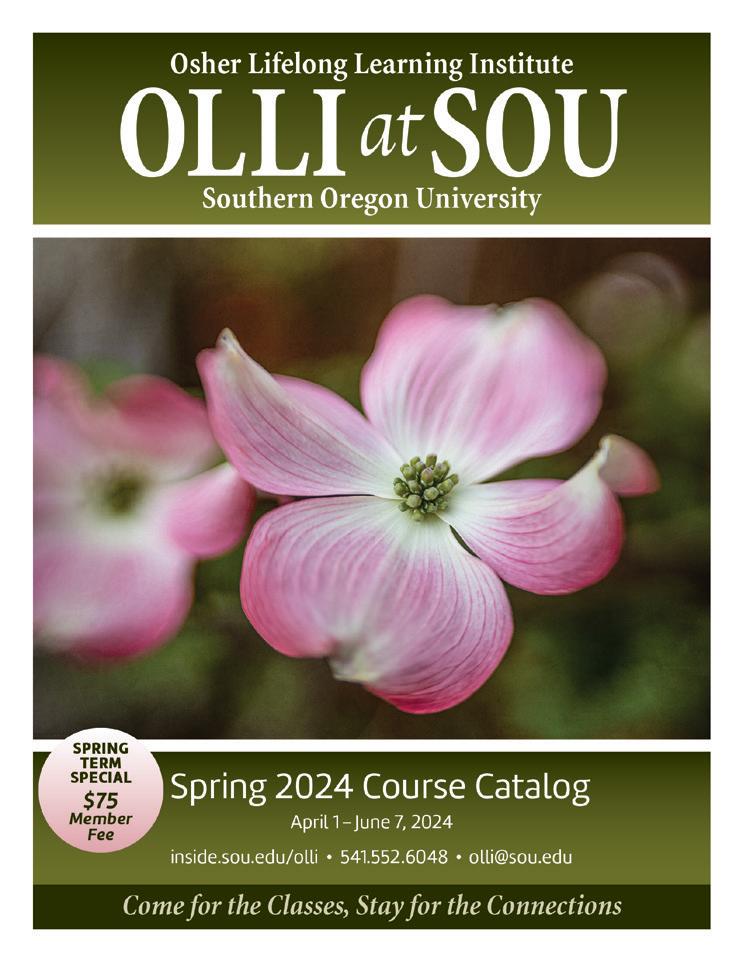

In-person classes and connections Online classes and connections Osher Lifelong Learning Institute at Southern Oregon University inside.sou.edu/olli � olli@sou.edu � 541-552-6048 Many Benefits with One-term $75 Member Fee � 124 classes to choose from— take all you want � Diverse range of topics � Hands-on & movement classes � No per-course tuition � Special interest groups � Social events Enroll Now for OLLI Spring Classes Special $75 Introductory Rate OLLI encourages your support for Jefferson Public Radio, a partner in lifelong learning. 30 YearsOLLIat SOU
 COURTNEY FLATT
COURTNEY FLATT
Mountaintop whitebark pine trees have faced threats from climate change to a deadly fungus called white pine blister rust.
Scientists Sequence Oregon Whitebark Pine Genome To Help The Threatened Trees
One tree in Central Oregon has helped protect iconic whitebark pine trees across the West. Scientists have sequenced the tree’s genome, a genetic map, that scientists help plant more resilient trees faster and cheaper.
Mountaintop whitebark pine trees have faced threats from climate change to a deadly fungus called white pine blister rust. The federal government recently identified the trees as threatened.
“Whitebark pine is a bit of a poster child for restoration issues,” said David Neale, a professor emeritus at the University of California, Davis, where he led the Whitebark Pine Genome Project.
Scientists hope the tree’s genome, all 25,362 genes within the whitebark pine’s 12 pair chromosomes, will help forest managers protect whitebark pines. It’s a little like the DNA kits for “23 and Me” but for conifer trees.
First, scientists used a 150-year-old whitebark pine tree in Oregon’s Deschutes National Forest to sequence the first whitebark pine genome, mapping out 87% of the genetic material.
“Having the blueprint of something, it’s like having the parts list for a refrigerator. You’ve got a better chance of repairing it if you know how it’s put together in the first place,” Neale said.
The sequence can be found at TreeGenes, a forest tree genome database. Neale is publishing a paper that is undergoing peer-review.
It’s not the first time scientists have sequenced the genome of trees. However, it is a new idea to sequence a tree’s genome for restoration purposes and not for timber harvests. The first tree sequenced was the loblolly pine, Neale said. Now, Douglas fir, sugar pine, coastal redwood, and giant sequoia also have
been sequenced.
At first, sequencing was challenging because conifer tree genomes are 10 times larger than human genomes, Neale said.
Whitebark pines are genomically most similar to sugar pines, Neale said.
Whitebark pine trees help snowpack stick around longer and provide food for Clark’s nutcrackers, bears and squirrels. They’re also important to some Indigenous people.
Keeping the trees safe from blister rust has been difficult. Right now, it takes roughly 10 years of collecting whitebark pine cones, growing seedlings, testing for rust resistance, monitoring the plants and planting in the field. That time and effort is expensive, costing anywhere from $1,200 to $1,800 per tree, according to the Whitebark Pine Ecosystem Foundation.
“Foresters have been and continue to do this work, but it takes time. It’s actually rather expensive compared to genomic technology once it’s developed,” Neale said.
Genomic sequencing could bring that cost down to roughly $100 per tree, according to the Foundation.
Next, Neale said, scientists will sequence all types of whitebark pines, those very susceptible to blister rust and those that can stave it off. That way, scientists can better identify the genes that could one day help with restoration efforts.

Courtney Flatt is a correspondent for Northwest Public Broadcasting and the Northwest News Network focusing on environmental, natural resources and energy issues in the Northwest.
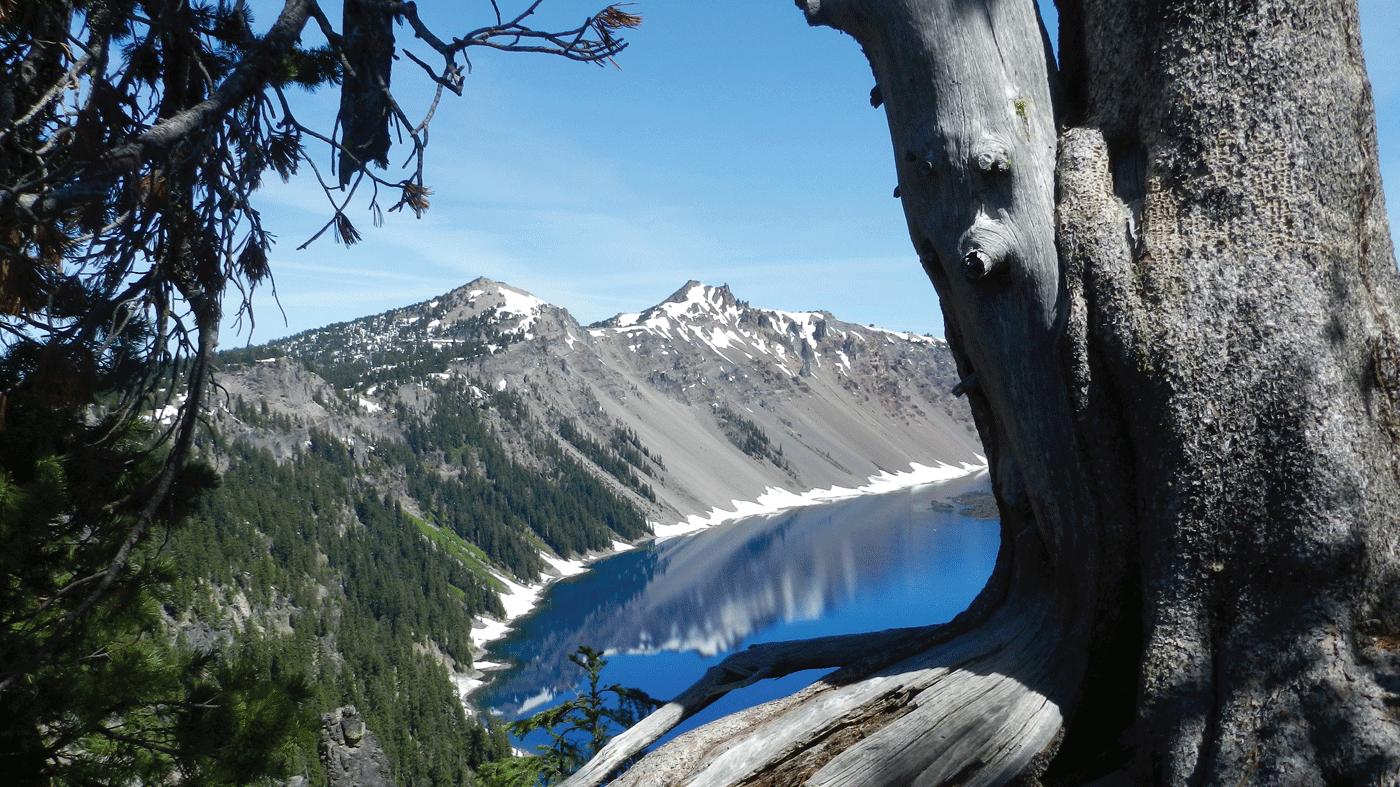
Whitebark pine (Pinus albicaulis Engelm) is a hardy, long-lived species. Known as the Grandmother Tree and over 500 years old, this whitebark pine is the oldest known tree in Crater Lake National park.
MARCH/APRIL 2024 JEFFERSON JOURNAL | 37
JPR NEWS FOCUS SCIENCE & ENVIRONMENT
NATIONAL PARK SERVICE
PHOTO
COURTESY OF


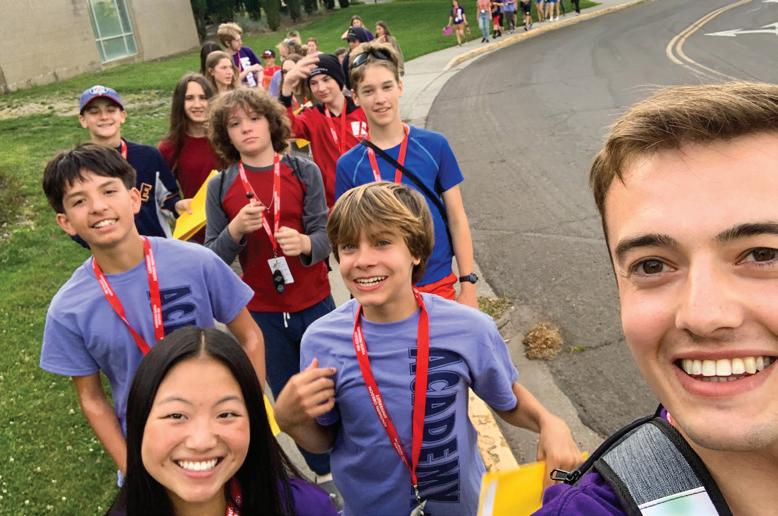



SUNDAY JUNE 23 THROUGH SATURDAY JUNE 29 FOR STUDENTS COMPLETING GRADES 5 THROUGH 8 541-552-6452 • youthprograms@sou.edu https://inside.sou.edu/youth/academy/apply.html ACADEMY 2024 minds unite! “I would definitely recommend ACADEMY to a friend. It’s super fun, you learn a lot, and you make new friends!” —2 023 ACADEMY STUDENT Celebrating 43 years of excellence!

UNDERGROUND HISTORY
CHELSEA ROSE
Archaeology Of Plastic
As archaeologists we spend our time sorting through the remnants of past human lives. The stone tools that efficiently took down wild game, the pioneer crocks once filled with briny pickles, the mining pans flecked with gold dust, broken bottles from refreshing beverages consumed long ago, and increasingly…plastic. In general, there is an arbitrary 50 year clock that determines if something falls within the realm of the archaeological. This means that Barbie dolls, 7-up bottles, and other trappings of “modern” culture are now “historical” in nature. It also means we have a whole new skillset to acquire as we learn to date and understand this new suite of artifacts. Feel old yet?
Luckily for us, Kimberly Wooten and others are here to help! I took a workshop from Wooten at a recent conference and was fascinated to learn how to classify early plastics such as celluloid, Bakelite, and Lucite. So fascinated, in fact, that I invited her to join me on a recent segment of Underground History so I could share this information with you! Many of us in the historical world are familiar with celluloid—not due to the hair brushes and buttons it made, but because its components of camphor and nitrocellulose not only made it transparent and a favorite for cinematographic film but also highly flammable. Museums and historical societies have had to grapple with how to store this vulnerable resource for decades. Nowadays, PingPong balls and guitar picks are the last of this proto-synthetic plastic legacy. And, if you are an avid Underground History
Many of us are having to readjust and recognize plastic as part of the archaeological record.
listener, you might recall that the razor we investigated as part of our series on the attempted train robbery at Tunnel 13 was made of cellulose!
In the early 20th century, Bakelite enters the scene. Vintage enthusiasts will easily recognize the distinctive muted colors gracing silverware handles or chunky jewelry. Unlike Celluloid, this is a fully synthetic compound comprised of phenol and formaldehyde (originally sourced from coal tar and wood alcohol). Also, unlike celluloid, Bakelite was opaque and could be produced in a variety of fun colors. Both celluloid and Bakelite can be identified by exposing them to heat or friction. You can dip celluloid objects in hot water and agitate Bakelite objects to release their respective and distinctive aromas. Celluloid will have a camphor odor (think mothballs), and Bakelite smells more chemically. You can also identify Bakelite with a little 409 and a Q-Tip: it will leave a distinctive yellow stain, no matter the color of the object. Bakelite is generally considered safe to use or wear, but if it is broken or degrading it is possible that it can off gas or release its chemical compounds into the environment.
While there is no shortage of other types of plastics now, the other one covered in Wooten’s class was Lucite. Before fancy fingernails, this lightweight and shatter-resistant synthetic acrylic polymer was a popular choice for airplane windows, and, later, buttons, baubles, and fun jewelry. Unlike its predecessors, Lucite could really lean in to the color game. Bright

MARCH/APRIL 2024 JEFFERSON JOURNAL | 39
Many archaeologists are having to readjust and recognize plastic as part of the archaeological record.
PHOTO: CHELSEA ROSE
Underground History
Continued from previous page
primary colors, opaly “moonstone,” and more, offered consumers a wide variety of bedazzling options for jewelry and clothing fasteners, and the versatile material was increasingly incorporated into a variety of appliances and everyday items. And, before you know it, the miracle material of plastic is everywhere. Archaeology is not just the study of the past, but can also tell us a lot about the present. By understanding how plastics entered, and eventually took over, modern civilization, we can better situate ourselves within the growing concern of what all of these synthetic compounds are doing to our environments, drinking water, and bodies. While some of these issues seem much larger than us as individuals, many of us do have choice points that allow us reduce the amount of plastic that we consume. Switching to reusable shopping bags and skipping single use containers (or, the dreaded water bottle), might seem like small steps, but as more folks forgo these cheap and disposable options, organic materials will replace them if the consumer demands it.
And, to circle back to archaeology, many of us are having to readjust and recognize plastic as part of the archaeological record. Until recently, plastic meant disturbed, or modern, now it is part of the historic assemblages that we carefully record and recover as a means to document and understand the lives and
experiences of those who came before us. As I struggle with this new task of distinguishing people and experiences from discarded and disposable plastic artifacts, I think of a family road trip long ago. My younger sister and I were fighting, and my dad told us if we did not stop, he would throw our My Little Pony out the window. What was assumed to be an empty threat was ignored, and the bickering continued until said pony was tossed out the window along Highway 395—destined to become part of the archaeological record. The archaeology of a family trip long ago. An artifact marking feuding sisters without modern technology to distract them, and a tangible remnant of an exasperated parent trying to maintain their sanity as they kept their eyes on the road. These moments are how the archaeological record is made. Beers on me to the archaeologist that finds that pony.

Chelsea Rose is an historical archaeologist and director of the Southern Oregon University Laboratory of Anthropology (SOULA). She is a principal investigator in the award-winning Oregon Chinese Diaspora Project (OCDP) and is host of the award-winning Underground History podcast, a monthly radio segment on JPR's the Jefferson Exchange.
JPR News Focus: Politics & Government
Continued from page 35
after OPB asked about Reschke’s remarks. “Our ability to live and work with our fellow Oregonians who speak different languages, pray or vote different ways, celebrate different cultures is our strength.”
Born in Somalia to a nomadic family, Jama came to the U.S. as a refugee after civil war erupted in his home country. Before entering politics, Jama co-founded Unite Oregon, a group dedicated to improving racial and economic justice for people of color, immigrants, refugees and people from low-income backgrounds.
“Like so many, I came to this country because it offered the promise of opportunity and equality,” Jama said, adding: “My colleague’s rhetoric is too common today. The politics of division are dangerous, fueling increased hate crimes and violence against people who are Jewish, Muslim, Asian American, immigrants and refugees, and those who have been ‘othered.’”
Reschke told OPB he had not meant to suggest Jama or any other non-Christian lawmaker was unfit to serve.
“I believe Senator Jama is qualified to be a Senator, as well as any other currently serving legislator duly elected by the people or appointed by County Commissioners,” he said.
Reschke’s complete comments suggest otherwise. Just after making his remark about Muslims and atheists, Reschke told his interviewer that in Oregon “we have a lot of people who are
godless, unfortunately, leading the way, and it’s the blind leading the blind.”
House Republican Leader Jeff Helfrich, R-Hood River, distanced himself from Reschke’s remarks when asked about the matter by OPB. But he did not reference the lawmaker directly and instead took the opportunity to knock Democrats.
“House Republicans, like all elected members, swear an oath to the Constitution of the United States and the Constitution of Oregon,” Helfrich said in a statement. “Neither document contains a religious test for elected office. We welcome all people, regardless of religion, who share our values and wish to see Oregon set a new course away from the radical and destructive policies of the majority party.”
Polling has suggested that the West Coast, and Oregon in particular, is among the least religious regions of the U.S. Even so, a study by the Pew Research Center in 2014 found that 61% of adults in the state identify as Christian, while 31% are not affiliated with a religion and 1% identify as Muslim.

Dirk VanderHart covers Oregon politics and government for OPB.
40 | JEFFERSON JOURNAL MARCH/APRIL 2024

DOWN TO EARTH
JULIET GRABLE
Residents Shocked And Saddened By Loss Of Copco Lake Amid Klamath Dam Removal
Drawdown of three reservoirs on the Klamath River is well underway, and this step in the dam removal process has already dramatically altered the landscape along the river in Southern Oregon and far Northern California.
Iron Gate, the lowest of the three remaining dams, was first breached on Jan. 9, followed by J.C. Boyle on the 16th. On Jan. 23, a concrete plug in the tunnel at the base of Copco 1 was blasted away. The reservoirs drained swiftly, leaving behind vast expanses of fissured mud the color and consistency of chocolate cake batter. The Klamath River is winding through the naked landscape, finding its new shape.
The transformation has left some residents reeling.
April Sears, a resident of the Copco Lake community, says the last week has been “horrible.”
“First of all, we lost the lake,” she said. “It kind of hits you hard, like you lost your best friend or somebody.” A few days ago, she lost water in the home she rents on Patricia Avenue. Klamath River Renewal Corporation, the entity overseeing dam removal, is putting Sears up in a hotel in Ashland while they resolve the situation. Nearby, KRRC has already installed an above-ground tank to furnish 11 homes with potable water after their shared well failed.
For some residents, the worst part of drawdown has been witnessing its effects on the wildlife they have come to know and love. Many have seen dead fish stranded in the mud, and on Jan. 27, residents spotted a doe and yearling that had become hopelessly stuck trying to reach water. Volunteer firefighters from the Hornbrook Fire Protection District tried to rescue the mired animals but abandoned the mission as dusk fell. Soon after, an officer from California Department of Fish and Wildlife euthanized the deer.
“The mud was so thick; it was so far out there; they tried so hard,” said Chrissie Reynolds, a long-time resident of Copco Lake who drove to the scene to try to help. “But all that time, those animals were suffering.”
Two days later, residents spotted another group of eight deer that had become trapped in the mud, but they had already died.
Peter Tira, information officer at CDFW, said his agency will be installing temporary fencing in areas where deer are likely to attempt crossing the drained reservoirs, along with reflective devices to steer them away from hazardous areas.
“We are going to deploy additional staff to the area to keep a watch on things,” he added.
Tira said that CDFW had emergency response plans for wildlife in place, but these plans focus more on specific species,
including western pond turtles, a state-listed “species of special concern,” and golden and bald eagles.
“The deer issue was unanticipated,” said Tira. “But we also have to remember that this is unprecedented. This is the largest dam removal project ever undertaken in American history, so a lot of the circumstances we’re learning about are unforeseen.”
CDFW will rescue animals where it’s safe to do so; in addition, Hornbrook Fire District has acquired some specialized equipment for mud, water and ice rescues and will be training personnel with it soon.
Anyone who sees a stranded animal should call CDFW and should not attempt to rescue wildlife on their own, said Ren Brownell, spokesperson for Klamath River Renewal Corporation. “It’s critical at this time that people stay out of the reservoir because it is dangerous for them as well.”
The influx of fine sediment and dead algae now flowing down the Klamath impaired water quality below Iron Gate, the farthest downriver dam. Oxygen levels became depleted but soon improved, according to a post on KRRC’s Facebook page. “Within 24 hours the concentration of dissolved oxygen began to recover,” it reads.

MARCH/APRIL 2024 JEFFERSON JOURNAL | 41
The Klamath River carving through the bed of the former Copco Lake reservoir.
PHOTO: JULIET GRABLE/JPR NEWS
Down To Earth
Continued from previous page
Drawdown of three reservoirs on the Klamath River is well underway, and this step in the dam removal process has already dramatically altered the landscape along the river in Southern Oregon and far Northern California.
“This is a temporary impact that’s the result of what will be a very beneficial river recovery process,” said Dave Coffman, geoscientist for Resource Environmental Solutions or RES, which is leading the restoration of the reservoir footprints. “Rivers are made to transport sediment; all we did was remove the impediments to sediment transport.”
One reason Copco Lake drained so quickly is that flows in the Klamath River are down overall, said Brownell. “Back in November or December we realized we might be in a drought condition, so we banked some water so that we could release it at first so that the first part of the reservoir would drain more slowly,” she explained. Once this banked water was used up, the rest of the lake drained swiftly. Hopefully, the strategy will keep slopes stable around homes near the former lakeshore. The Yurok Tribe is using drones to monitor slope stability on the slopes below the homes on Copco Lake and along Copco Road at Iron Gate Reservoir.
The speed of drawdown did not allow crews to assist with “sediment evacuation” as was planned. In that scenario crews would use jets of water and shovels to slough off chunks of mud from the banks as the water level dropped.
“Conditions just aren’t safe to be out there right now, so we pulled back until sediments firm up a little bit,” said Coffman.
Crews from RES are actively planting acorns and seeding all three reservoir footprints near the old shorelines, moving closer to the river as the mud dries. Planting will continue through the year.
“The reveg crew is right behind the house planting seed,” said Francis Gill, Copco Lake resident and fire chief for the community’s volunteer fire department. “It will be kind of neat to see when things start sprouting in the spring.” Gill and his husband, Danny Fontaine, recently rented out the old Copco Store building to the Yurok Tribe so they can use it as office space and lodging for their crews.
That’s not to say Gill is happy about losing his lake. “I haven’t seen any ducks or geese or blue herons since they did this,” he said, adding that he doesn’t see how any fish in the river flowing through the now-empty reservoir could have survived the turbid conditions.
Like Gill, Reynolds is anxious to see how migratory birds, accustomed to using the lake as a refuge, react when they return, only to find it gone.

“Everyone here is used to having deer on their lawn and geese on their lawn and pelicans on their lawn,” said Reynolds, mourning what she fears will be lost forever. “We were intrinsically connected with our wildlife.”
Wildlife-related concerns along the Klamath River should be directed to CDFW’s Northern Region office in Redding at (530) 225-2300 or by emailing askregion1@wildlife.ca.gov

Juliet Grable is a writer based in Southern Oregon and a regular contributor to JPR News.
42 | JEFFERSON JOURNAL MARCH/APRIL 2024
Copco Lake resident Linda Ebert stands where the reservoir has been drained to make way for a flowing Klamath River.
PHOTO: JULIET GRABLE/JPR NEWS

RECORDINGS
I/O - A Part Of Everything Peter Gabriel
One of the bestselling and cherished rock albums of all time – Pink Floyd’s Dark Side of the Moon was released just over 50 years ago. It came on the heels of concept albums by The Who and masterpieces like Sgt Pepper’s Lonely Hearts Club Band by the Beatles and the Moody Blues classic Days of Future Past. It was a time when FM radio was changing the way music was consumed and full-length albums with themes, meant to be listened to from start to finish, were a major part of popular music.
Today we listen differently. With streaming, and song placement in tv and movies and even commercials, the focus is on the song, more like early AM radio. In the time I’ve been working in radio, I’ve noticed that the average length of a song (especially in pop) has decreased, and albums are more collections of singles than the murals once painted by bands like Genesis, Rush and The Beach Boys. That doesn’t diminish the work that artists are putting into their music or the music itself, it’s just a different focus. Like many others, and maybe especially because of the amount of music that I’m exposed to, I don’t have a lot of time to sit down and fully appreciate a full-length record very often. I knew though that I/O, the latest release from the progressive rock icon Peter Gabriel, would be worth the time.
From his earliest days in Genesis, Gabriel has embraced this kind of music-making. He’s no stranger to pop or great singles, but a Peter Gabriel album is best played from start to finish multiple times to absorb all the nuances. His attention to detail in the studio is the stuff of legends. His 1986 release, So, took 10 months to produce, at the time, the shortest amount of time he’d spent on an album.
The idea for I/O began 20 years ago, so even by his standards, he took his time honing it. The album was released in singles during 2023 on the full moon of each month. The full length was officially released in December. It’s a 12-song album over 70 minutes in length. There are three different mixes: bright side, produced by Mark “Spike” Stent; dark side, produced by Tchad Blake; and in-side, on blu ray disc and recorded in Dolby surround sound. I honestly can’t hear a huge difference in the bright and dark side versions, or at least not a big enough difference that it makes or breaks either of them. The bright side mix is heavier on the percussion and more vocal forward. On the dark side mix there is more separation between the instruments and heavier bass lines. I have yet to hear the in-side mix to compare it.
Gabriel has never been bashful about social commentary. True to form, I/O is full of observations about life and existence from his mature point of view. The title and title track set up the theme. Gabriel is a fan of technology and has advocated for its exploration. I/O in technology stands for input/output – the

I/O is the tenth studio album by English singer-songwriter and musician Peter Gabriel, released December 2023 through Real World Records.
transfer or data from one source to another. In the title track, he relates input and output to life itself and his relationship to the big picture – “I’m just a part of everything/I stand on two legs and I learned to sing/I walk with my dog and whistle with the bird. Stuff going out, stuff coming in/I’m just a part of everything.” There is a similar theme in This Is Home. I find myself comparing them both to some of the existential movements on the 2023 Paul Simon record Seven Psalms.
On The Court, Gabriel explores the balance between the necessity of a justice system and the associated abuse of power. Road to Joy is about someone who goes through a near-death experience but is stuck and unable to communicate. This particular song has roots in his 2000 project OVO: The Millennium Show which was commissioned as part of England’s millennium celebration at the turn of the century.
The tone of this/these record(s) is like a mash-up of sounds from Gabriel’s 50-year career. The lead-off track Panopticom, is reminiscent of the Genesis masterpiece Lamb Lies Down on Broadway mixed with some of the synth pop from his early solo records. The breakout single Road to Joy shares some of its melody with Kiss That Frog from his ‘90s release Us.
MARCH/APRIL 2024 JEFFERSON JOURNAL | 43
DAVE JACKSON
Recordings
Continued from previous page
Other tunes follow that formula with a mix of more introspective down-tempo tunes and his signature upbeat dance pop. There didn’t seem to be an effort at reinvention or compromise to fit any particular trend. He did what he knows. Sticking with his classic sound, is his classic core band with Manu Katche on drums, David Rhodes on guitar and Tony Levin on bass. Gabriel’s dynamic voice sounds as strong as ever putting aside any concerns that at 73, he may be past his prime. While fans might find comfort in familiarity, some may find reason to critique Gabriel’s formula. Plenty of time has gone by since his last album of new material for him to mix things up a bit. It is, however it’s easily comparable to some his most loved material. In other words, get ready to reconsider the order of your favorite Gabriel albums.
For the uninitiated, I/O is a great starting point to explore an artist with an enormous body of carefully considered work dating back to the beginnings of the progressive rock band Genesis. For fans of Gabriel and people who enjoy being immersed in a record, there is plenty of nuance and enough fodder for conversation to last months.

Music Director Dave Jackson hosts Open Air, weekdays on JPR’s Rhythm & News Service.
Where There’s
A Nature Notes Sampler II is a broad collection of radio com mentaries based on Dr. Frank Lang’s popular series that aired on JPR since the publication of the first volume in the year 2000. This collection of es says offers Dr. Lang’s same eclectic, often humorous view of the natural world in the mythical State of Jefferson and beyond.
Over 100 of Dr. Lang’s commentaries have been collected in this second vol ume. Make it your first collection of Nature Notes, or add it to the original publication for a complete set!

Order A Nature Notes Sampler II for $19.95 postpaid.
A Will There’s A Way! Our
Gift To You...
JPR now offers a free online tool that enables you to create a legally valid will, completely free of cost.
This tool is for individuals who want to proactively manage their financial future, take care of loved ones, and have an opportunity to contribute to community organizations that reflect their lifelong values. The platform makes it easy to put your intentions and priorities on paper... and all it takes is about 20 minutes of your time (and no obligation to contribute to JPR).
Go to iJPR.org/make-a-bequest to learn more, and get started today!

name phone address city state zip Make checks payable to: Jefferson Public Radio or bill to my credit card: VISA Mastercard American Express Discover card no exp amount: $19.95 Send completed form to: Nature Notes / Jefferson Public Radio, 1250 Siskiyou Blvd., Ashland, OR 97520
MILK STREET

CHRISTOPHER KIMBALL

Lemon And Shrimp Risotto With Fresh Basil
This is our version of the rich, intensely flavored risotto di limone that Giovanna Aceto taught us to make in Amalfi, Italy. In an unusual twist, the risotto is finished with an egg yolk and a couple tablespoons of cream, giving the rice a lush, velvety taste and texture. To create a flavorful broth for simmering the risotto, we steep the shrimp shells and strips of lemon zest in water, and for citrus notes that register at every level, we stir in bright, puckery lemon juice and floral, fragrant grated zest just before serving. If you purchase shrimp that are already shelled, bottled clam juice is a fine substitute. Bring two 8-ounce bottles clam juice, 3 cups water, . teaspoon salt and the zest strips to a simmer in the saucepan and cook, covered, for 10 minutes to infuse, then strain as directed. Don’t uncover the pot for at least 5 minutes after adding the shrimp. Lifting the lid releases some of the residual heat that’s needed to cook the shrimp.
MAKES 4 SERVINGS | 45 MINUTES
Ingredients
2 lemons
2 teaspoons plus 2 tablespoons extravirgin olive oil, divided, plus more to serve
12 ounces extra-large (21/25 per pound) shrimp, peeled (shells reserved), deveined and patted dry Kosher salt
1 small yellow onion, finely chopped
1 cup carnaroli or arborio rice
½ cup dry white wine
1 large egg yolk
2 tablespoons heavy cream
½ cup loosely packed fresh basil, roughly chopped
Directions
1. Using a vegetable peeler (preferably a Y-style peeler), remove the zest from 1 of the lemons in long, wide strips; try to remove only the colored portion of the peel, not the bitter white pith just underneath. Using a rasp-style grater, grate the zest from the remaining lemon; set aside separately. Halve the lemons and squeeze ¼ cup juice; set the juice aside.
2. In a medium saucepan over medium, heat 2 teaspoons oil until shimmering. Add the shrimp shells and cook, stirring constantly, until pink, 1 to 2 minutes. Add 5 cups water, the zest strips and ½ teaspoon salt, then bring to a simmer. Cover, reduce to low and cook for
10 minutes. Pour the broth through a strainer set over a medium bowl; rinse out the pan. Press on the solids to extract as much liquid as possible, then discard. Return the broth to the pan, cover and set over low to keep warm.
3. In a large Dutch oven over medium-high, heat 1 tablespoon of oil until shimmering. Add the onion and ¼ teaspoon salt, then cook, stirring occasionally, until softened, 6 to 7 minutes. Add the rice and cook, stirring, until the grains are translucent at the edges, 1 to 2 minutes. Add the wine and cook, stirring occasionally, until the pan is almost dry, about 3 minutes. Add 3 cups of the hot broth and cook, stirring often and briskly, until a spoon drawn through the mixture leaves a trail, 10 to 12 minutes.
4. Add the remaining broth and cook, stirring, until the rice is tender, 8 to 10 minutes. Remove the pot from the heat and stir in the shrimp. Cover and let stand until the shrimp are opaque throughout, 5 to 7 minutes.
5. Stir in the remaining 1 tablespoon oil, the lemon juice, egg yolk, cream, basil, and the grated zest. The risotto should be loose but not soupy; if needed, stir in water 1 tablespoon at a time to achieve the proper consistency. Taste and season with salt. Serve drizzled with additional oil.
MARCH/APRIL 2024 JEFFERSON JOURNAL | 45
Christopher Kimball’s Milk Street in downtown Boston—at 177 Milk Street—is home to the editorial offices and cooking school. It also is where they record Christopher Kimball’s Milk Street television and radio shows. Milk Street is changing how we cook by searching the world for bold, simple recipes and techniques. For more information, go to177milkstreet.com. You can hear Milk Street Radio Sundays at 3:00pm on JPR’s News & Information service.
POETRY
BRYAN SAINT GERMAIN
Give a Meter, Take a Meter
Oh, Shakespeare! Oh, iambic meter!
How commonplace to aim your pitch
At every common Englishman’s unconscious Way of speaking. Was that genius? Was it guile?
My education in Romance and in Germanic Languages has given me some tendency Toward iambic cadences. I cannot blame My love of rhyme on anyone except myself.
Were we to nevermore use words like Janissary, Henceforth, Ostentatious, or Facetious, Or Crapulous, Kerfuffle, or Obsequious, How hollow would our language be?
So yes, it’s true, I cannot chime into Discussions without rhyming. It’s my Habit and it’s discipline I lack, I know. Don’t think that I am tactless, please.
Can I be blamed if natural speech
In spoken English tends to reach toward Metered sets and covert rhymes?
Just listen to tonight’s newscast With these few thoughts on meter in mind.
Hillside, February
My cats are adults now. Outside, Our mini-Serengeti theirs to explore. Turkeys courtesy of Ducks Unlimited Coyotes following in their wake.
Ignore the deer. They eat whatever Sprouts too early in this season. I see Succession year to year from miner’s Lettuce to Oregon grape.
Past solstice now. The sun can peek
Above the trees about midday
Along our Southern flank uphill Warm days we both fear and await.
Our land transforms from year to year
And this was never clear to me until I learned to measure what we have In terms of what remains.
Bryan Saint Germain has lived in Oregon for more than forty years. He is a U.S. baby boomer who was raised in Madrid and in London. To this day he is often flabbergasted by his native country’s goings-on. His careers included theatre stage design, computer user interface design, and decades teaching SCUBA diving, creating both brand-new divers and brandnew instructors. He is proud to have trained over seven hundred divers with nary a mishap. He began writing poetry in his seventies.

Writers may submit original poetry for publication in Jefferson Journal
Email 3–6 poems, a brief bio, and your mailing address in one attachment to jeffmopoetry@gmail.com , or send 3–6 poems, a brief bio, and a self-addressed, stamped envelope to:
Amy Miller, Poetry Editor Jefferson Journal
1250 Siskiyou Blvd Please allow eight Ashland, OR 97520 weeks for reply.



46 | JEFFERSON JOURNAL MARCH/APRIL 2024
cascadetheatre.org





march 12
March 6

march 13


march 21-30




REDDING’S HISTORIC cascadetheatre.org 530-243-8877 2024 WINTER-SPRING SEASON
with Special Guests
Rob Ickes & Trey Hensley
Glenn Miller Orchestra
Southern Oregon University
Ashland OR 97520-5025

Blvd.
1250 Siskiyou

























 LYNNE TERRY
LYNNE TERRY


































 ALLISON FROST
ALLISON FROST























 ELIZABETH CASTILLO
ELIZABETH CASTILLO



 MONICA SAMAYOA
MONICA SAMAYOA





 DIRK VANDERHART
DIRK VANDERHART





 COURTNEY FLATT
COURTNEY FLATT



































